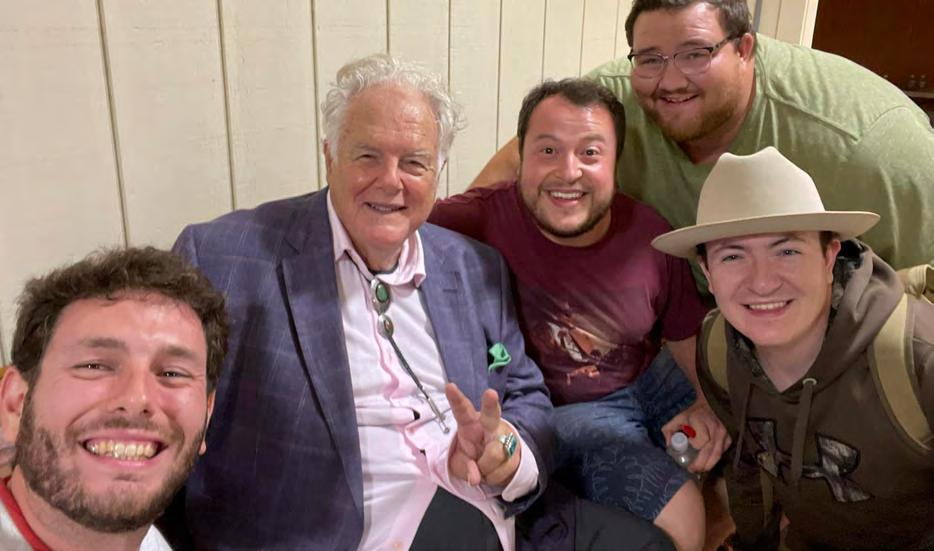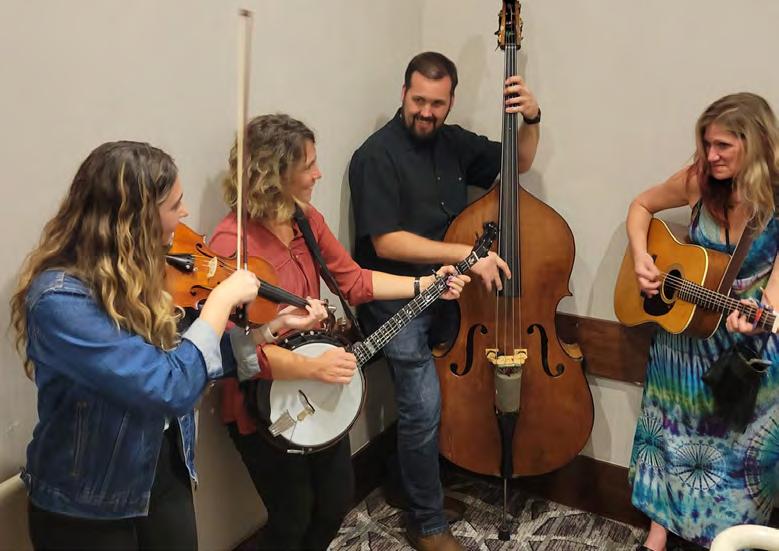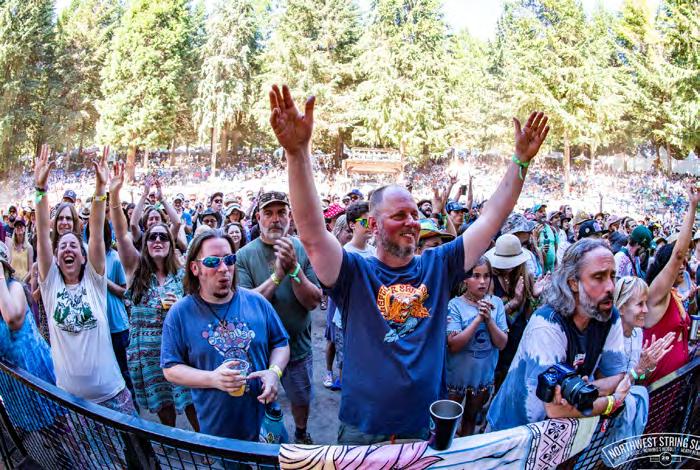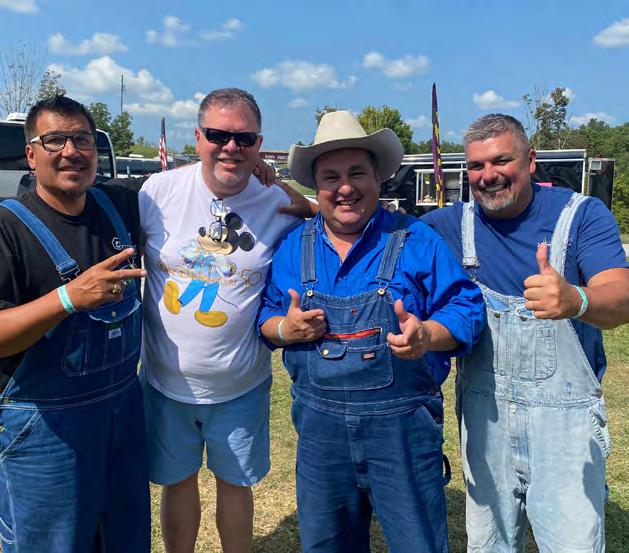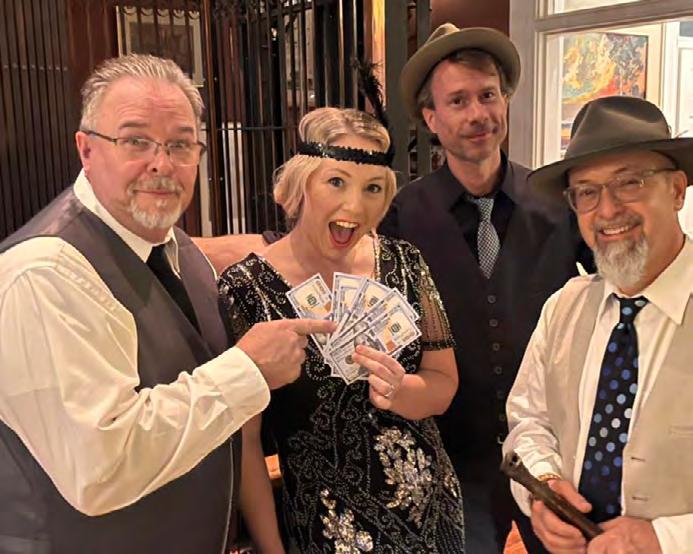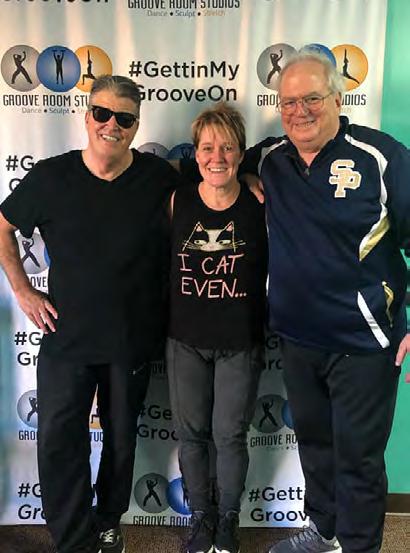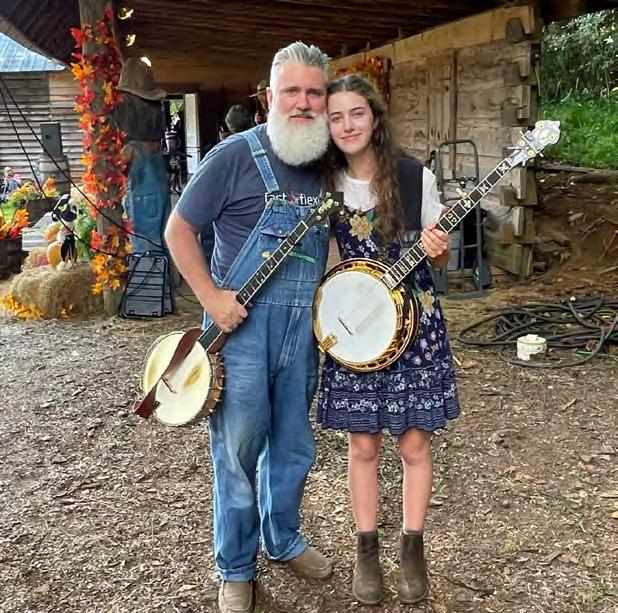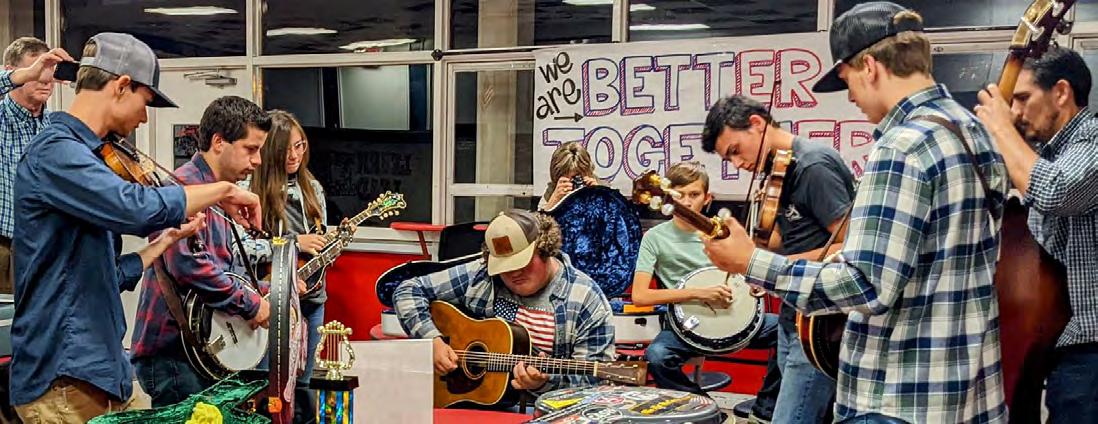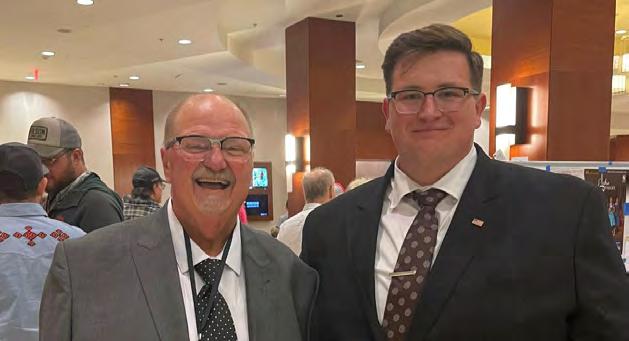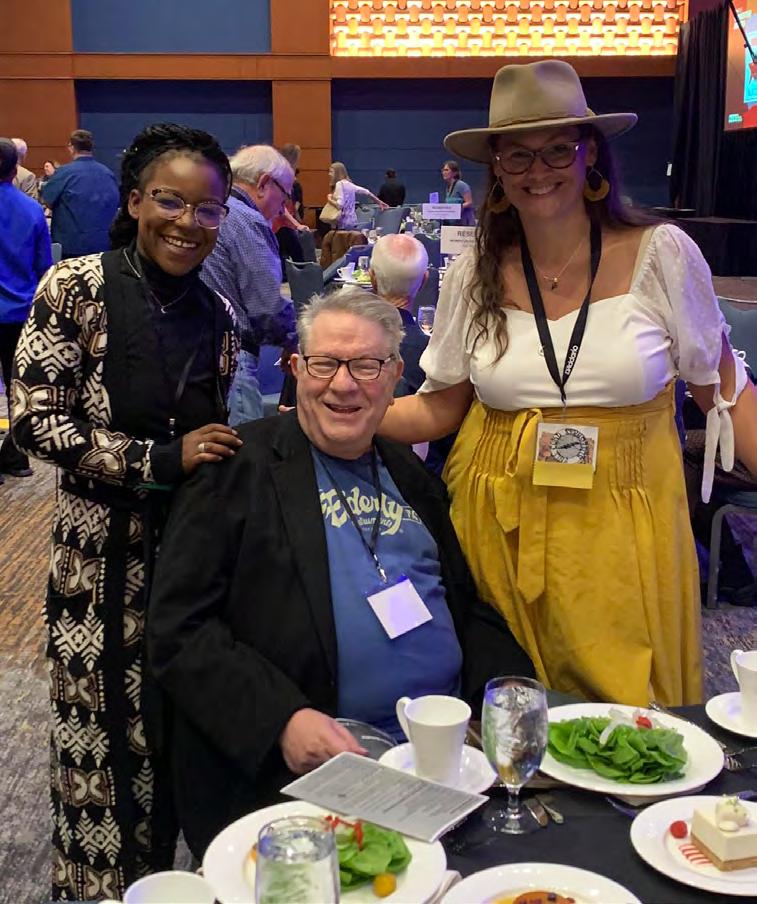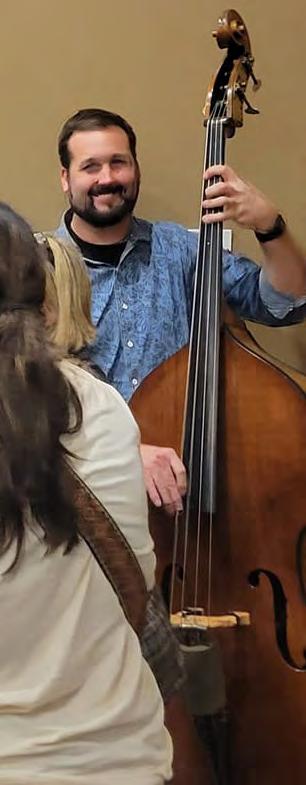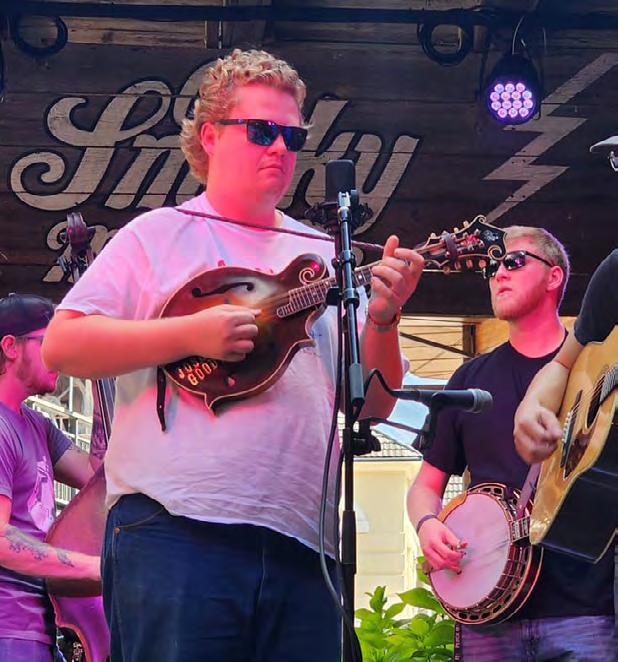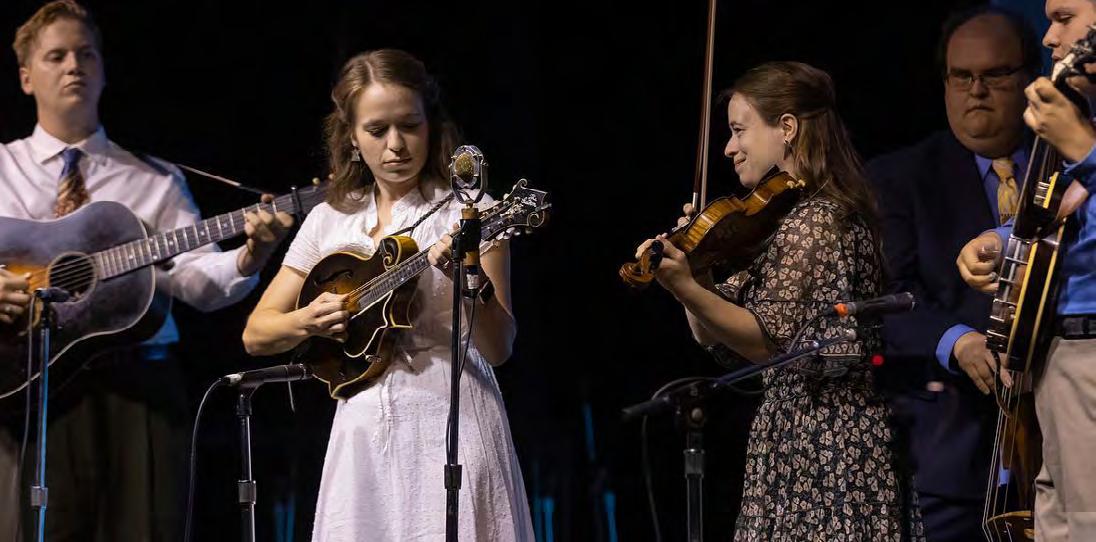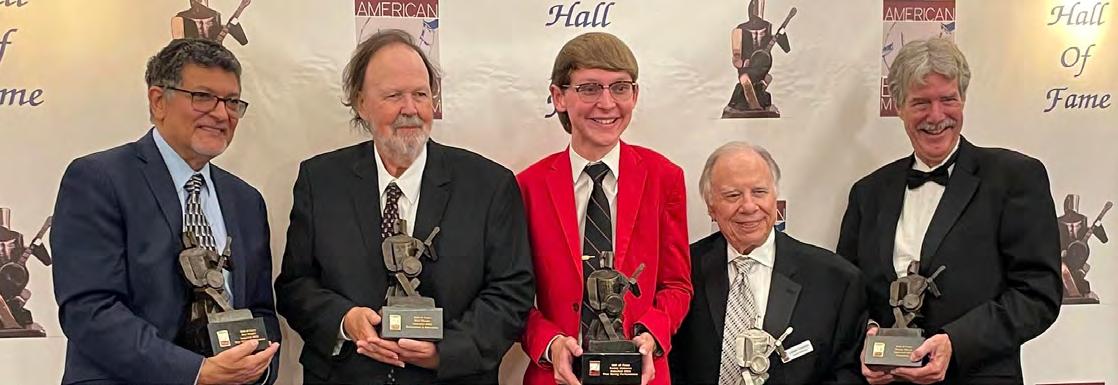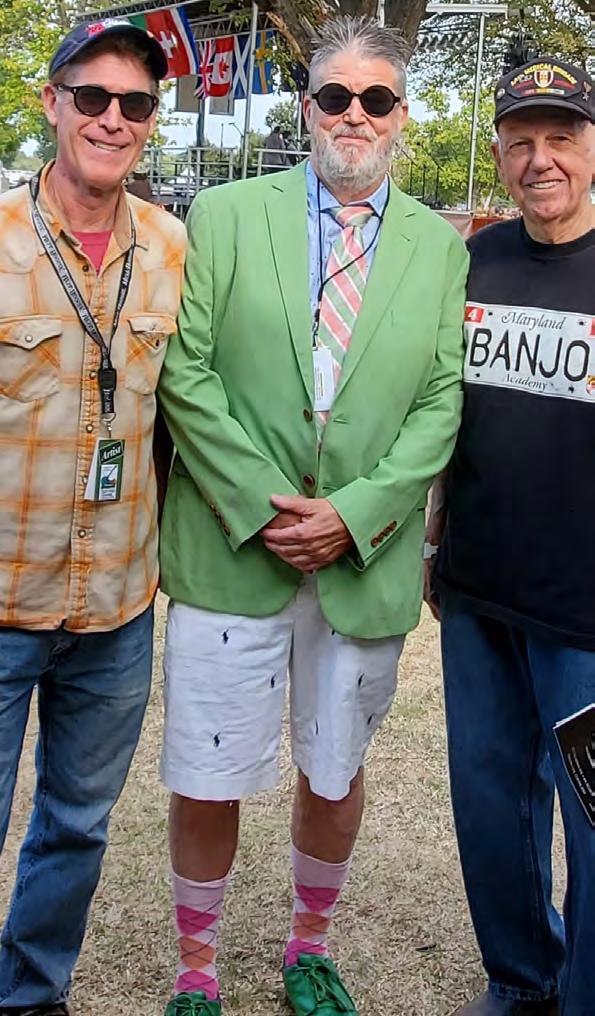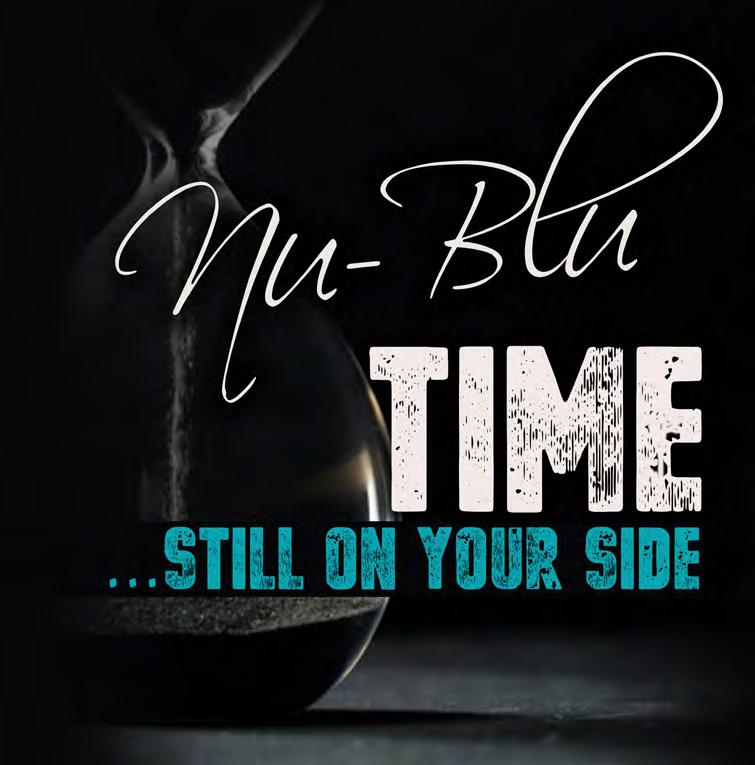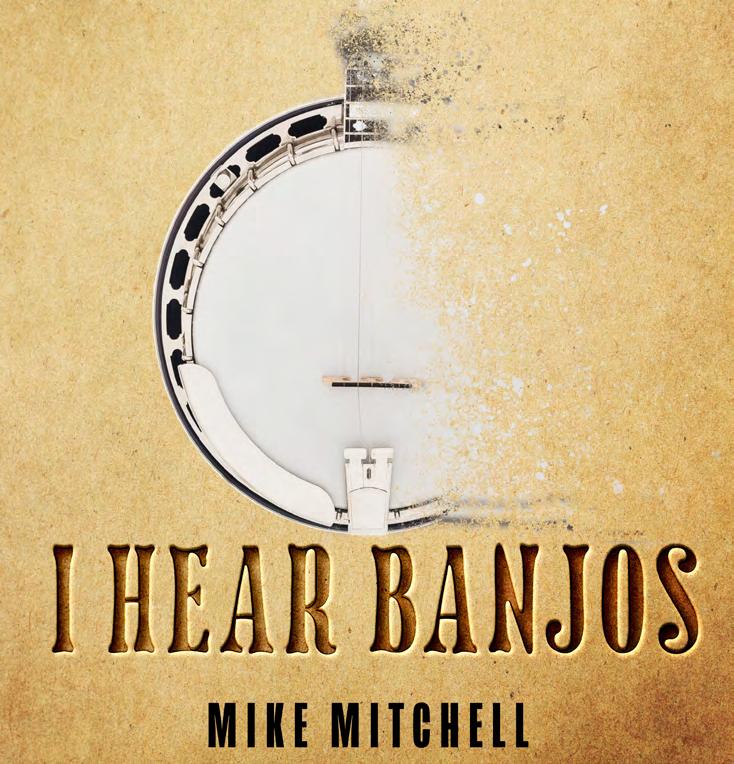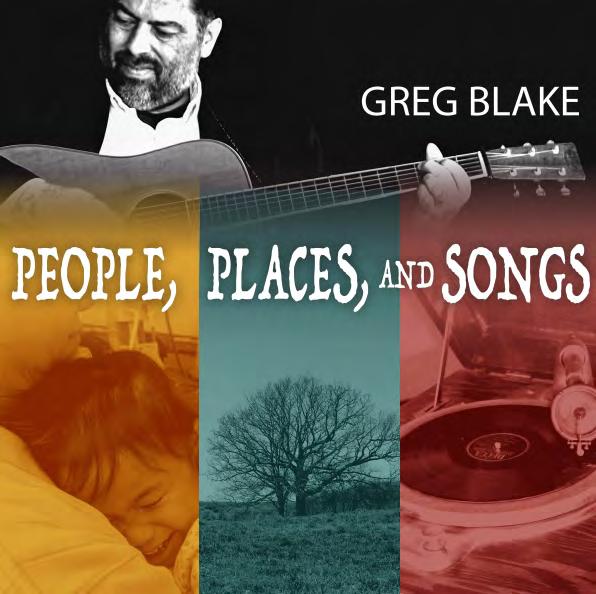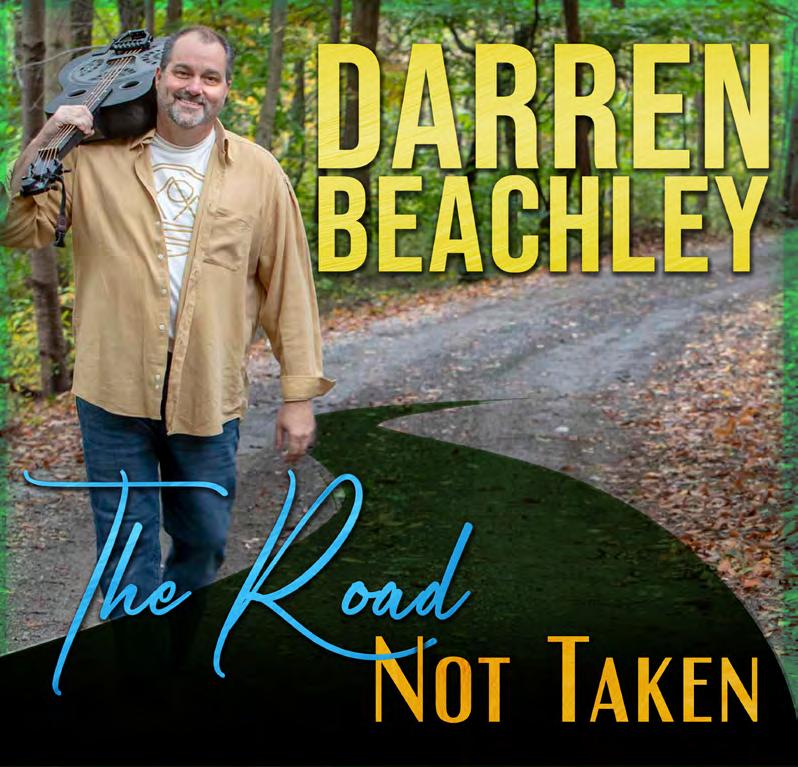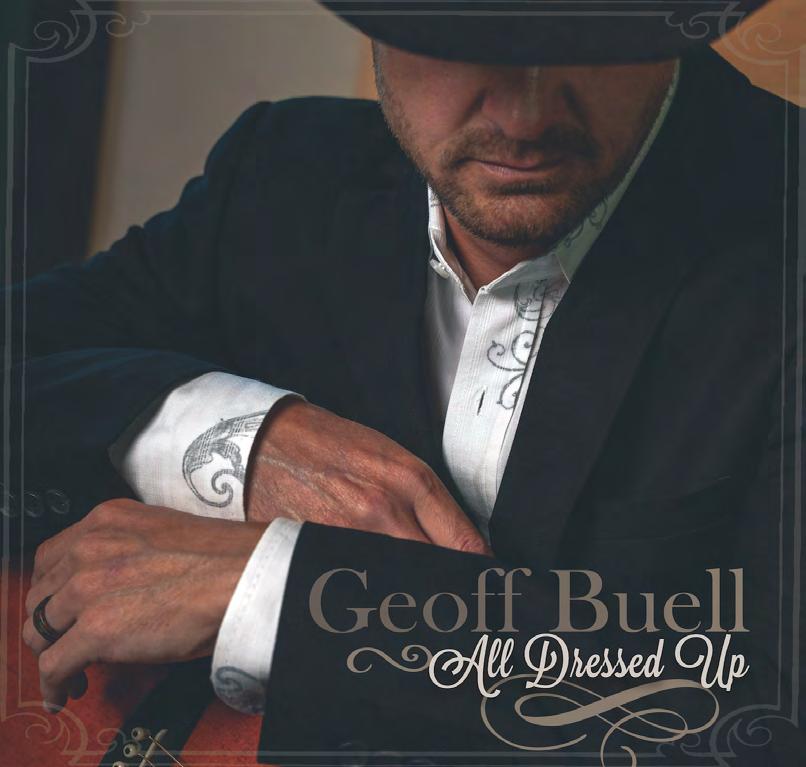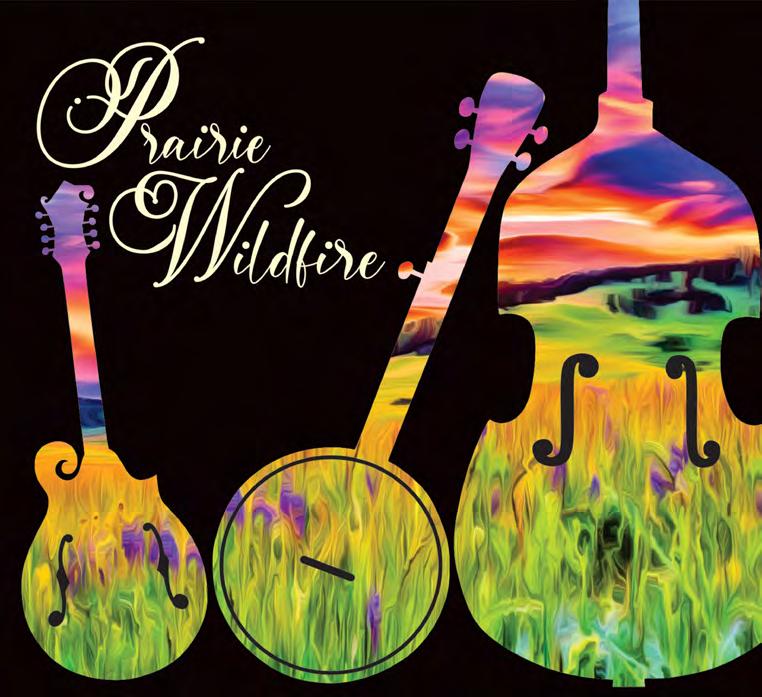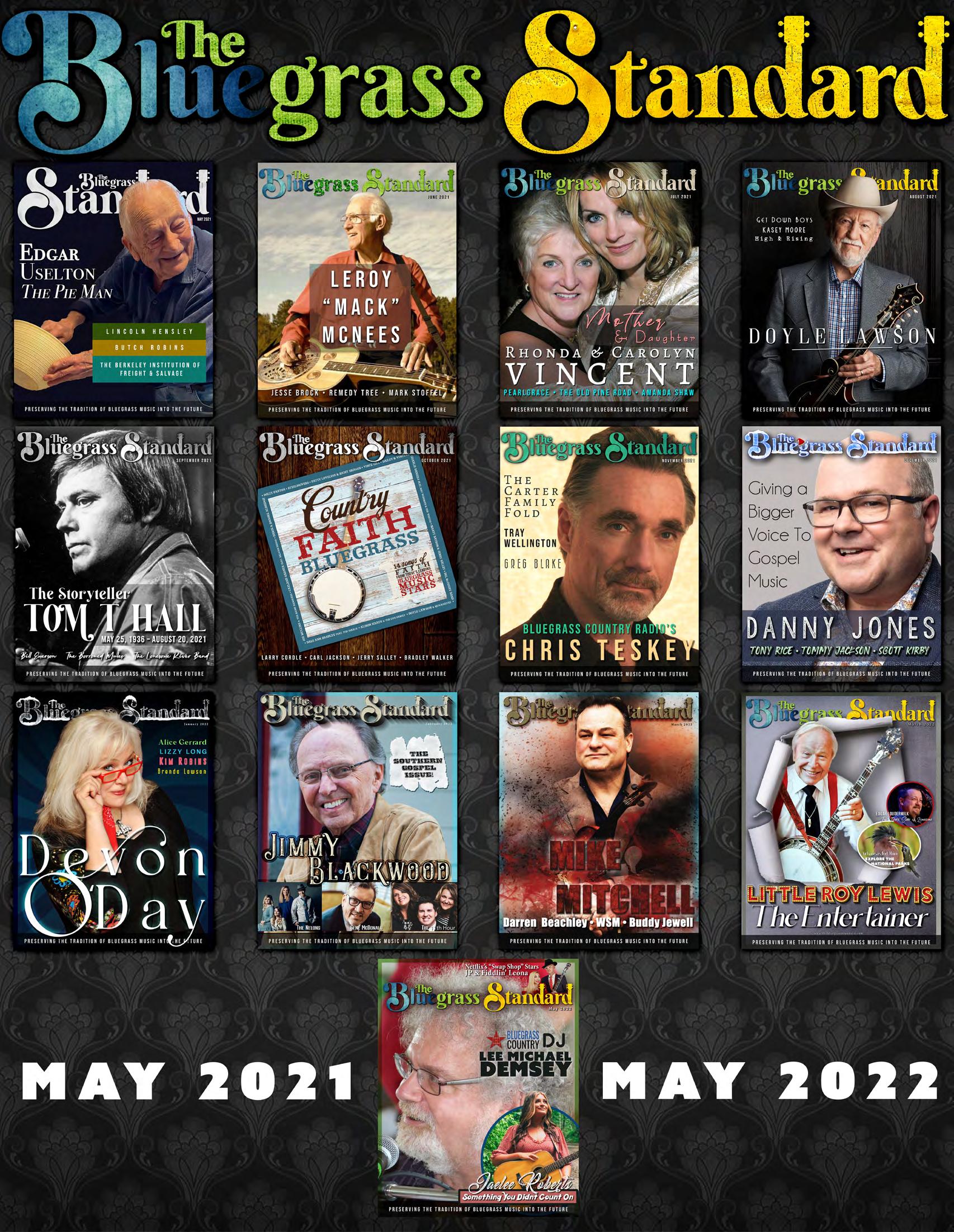






















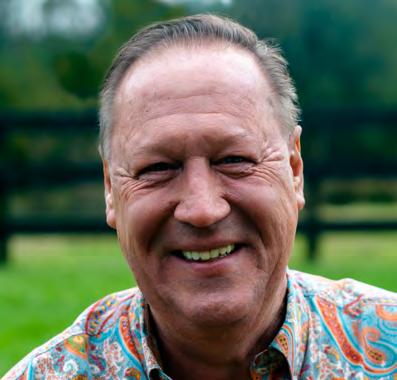
The Bluegrass Standard is a life-long dream of Keith Barnacastle, who grew up in Meridian, Mississippi. For three years, Keith brought the Suits, Boots and Bluegrass Festival to Meridian. Now, with the Bluegrass Standard, Keith’s enthusiasm for the music, and his vision of its future, reaches a nationwide audience every month! Keith@TheBluegrassStandard.com
Richelle Putnam • Managing Journalist Editor

Richelle Putnam is a Mississippi Arts Commission (MAC) Teaching Artist/Roster Artist (Literary), a Mississippi Humanities Speaker, and a 2014 MAC Literary Arts Fellowship recipient. Her non-fiction books include Lauderdale County, Mississippi; a Brief History, Legendary Locals of Meridian, Mississippi and Mississippi and the Great Depression. Richelle@TheBluegrassStandard.com

Rebekah Speer has nearly twenty years in the music industry in Nashville, TN. She creates a unique “look” for every issue of The Bluegrass Standard, and enjoys learning about each artist. In addition to her creative work with The Bluegrass Standard, Rebekah also provides graphic design and technical support to a variety of clients.

Susan traveled with a mixed ensemble at Trevecca Nazarene college as PR for the college. From there she moved on to working at Sony Music Nashville for 17 years in several compacities then transitioning on to the Nashville Songwritrers Association International (NSAI) where she was Sponsorship Director. The next step of her musical journey was to open her own business where she secured sponsorships for various events or companies in which the IBMA /World of Bluegrass was one of her clients.
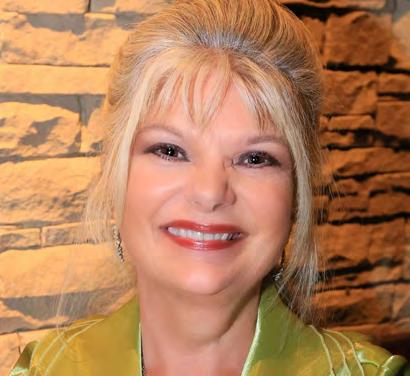


Shelby Campbell is a writer and designer whose heart beats for creativity. A native of rural Livingston, AL, she found her passion in journalism and design at The University of West Alabama, where she received a Bachelor’s degree in Integrated Marketing Communications. Shelby also has her own photography business.


Susan Marquez is a freelance writer based in Madison, Mississippi and a Mississippi Arts Commission Roster Artist. After a 20+ year career in advertising and marketing, she began a professional writing career in 2001. Since that time she has written over 2000 articles which have been published in magazines, newspapers, business journals, trade publications.
Kara Martinez Bachman • Journalist Kara Martinez Bachman is an author, editor and journalist. Her music and culture reporting has appeared in dozens of publications and she’s interviewed many performers over the years, from local musicians to well-known celebrities. She’s a native of New Orleans and lives just outside the city with her husband, two kids, and two silly mutts.
Candace Nelson is a marketing professional living in Charleston, West Virginia. She is the author of the book “The West Virginia Pepperoni Roll.” In her free time, Nelson travels and blogs about Appalachian food culture at CandaceLately.com. Find her on Twitter at @Candace07 or email CandaceRNelson@gmail.com.

From a small community in Eastern North Carolina, 22-year-old Garrett Newton reflects how original bluegrass artists start. Growing up in a small Mayberry-like community where rural living is the focus, and bluegrass and country music tell the stories, it was a no-brainer when ten-year-old Garrett Newton first picked up the banjo. His grandmother gave him a banjo for his birthday that year, and he played at any chance—before and after school, teaching himself on YouTube and at local bluegrass picking sessions he found.
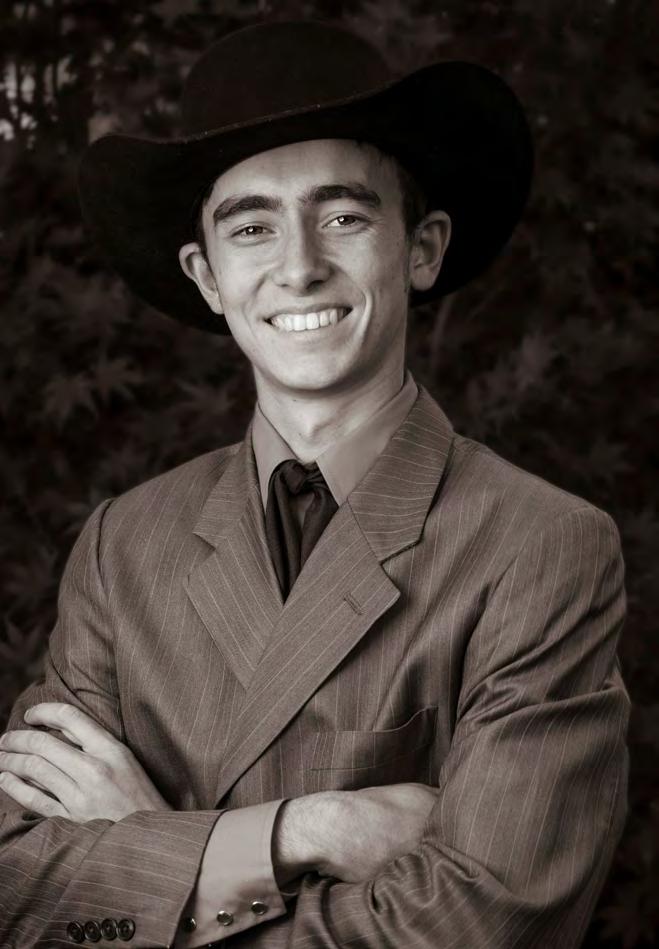
“McGee’s Crossroads epitomizes country living. Country and bluegrass music plays from the speakers in every house, and it hasn’t changed much since I first started playing,” Newton said.
Finding himself drawn to this traditional bluegrass sound because of his hometown and upbringing, Newton dedicated time to learning the history of the music and listening to and absorbing the styles of the earliest generations of bluegrass artists. That, in turn, reflected in the way he played.
“I saw her at a festival and asked if I could play the banjo for her,” Newton said.
Impressed with how Newton played, Lorraine took him under her wing and invited him to play with her on stage during her tour.
“I ended up going with her on every cruise and just about every time they performed. Touring with Lorraine Jordan became a home away from home for me. I enjoyed playing a few songs with her and running the sound. It was so much fun, and I created memories that will last a lifetime.” Lorraine showed him the business side of music, and “she taught me to get out there, shake hands, and talk to people. I took a lot from working with her,” Newton said.
Later, he realized his time with Lorraine Jordan had run its course and, with Lorraine’s help, pursued his music with The Garrett Newton Band while touring with her. Like Jordan, Newton kept it traditional with his music, recording two albums and performing at festivals and concerts throughout the southeastern US during their time together.
This talent and drive for traditional bluegrass allowed Newton to find himself as Lorraine Jordan’s protege, touring the country with her only a few years after picking up the banjo.
From 2020 to early 2022, Newton took a break from performing and, in turn, found a new passion for music, but this time, he focused on a traditional
country sound.
“In the almost 13 years since I first started playing music, I never really looked at it as a career,” Newton continued. “I just really enjoyed playing. It was always something that helped me to get away from what I was going through at the time.”
During his time away from performing, Newton worked on a farm instead—finding inspiration from none other than one of country music’s founders, Hank Williams. After countless research on Hank Williams as a performer and musician, Newton gathered a Hank Williams tribute band and 40-45 of Hank’s songs for a show unlike any other, with Newton as the lead.
country music was gold. Other than the steel guitar, I want to keep everything as raw as I can get it. I relate to this music more than any other music I’ve ever played,” Newton said.
Although he is now primarily a traditional country artist, Newton still belongs to Tomorrow’s Bluegrass Stars (TBS). He meets John Colburn and TBS members at IBMA in Raleigh, North Carolina, every year. Newton appreciates how the TBS and the bluegrass family make everyone feel welcome.
Garrett Newton has two goals moving forward with his musical career—to have fun and keep the music of Hank Williams alive. Reflecting on his journey today inspired him to offer this advice: “With music constantly changing, play the music you feel led to play. If you want to play more traditional music, play that. You can only play what’s really in your heart and what you have a drive for.”
“We sing Hank Williams songs no one else is singing, even unreleased songs from old family records. Very few other Hank Williams tribute bands do as many songs as we do,” Newton said.
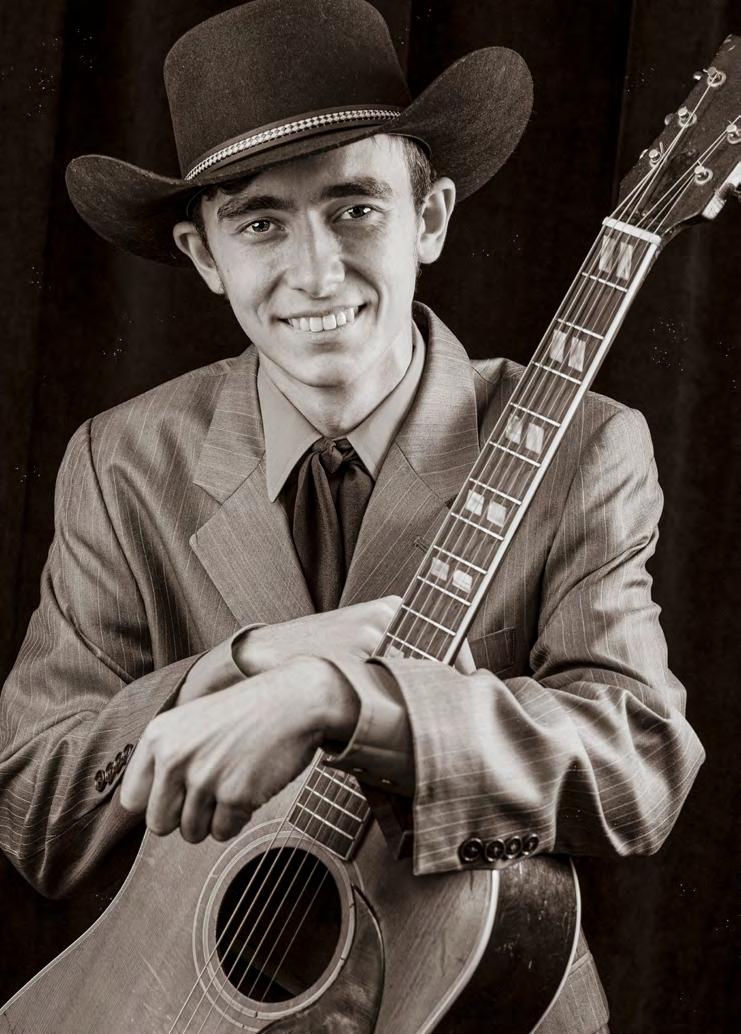
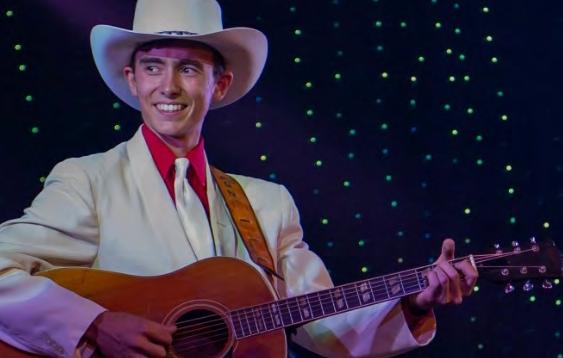
Newton feels like he has found his place in music with this new adventure. Even Lorraine Jordan used to say that he was a young artist with an old soul, and this music allows him to embody that.
“I always wanted to capture a vintage sound, getting as close to that 1950s sound as possible,” Newton said, “and the honky-tonks in rural Alabama. I like to do away with the modernness of the music and make it as raw as possible, back when

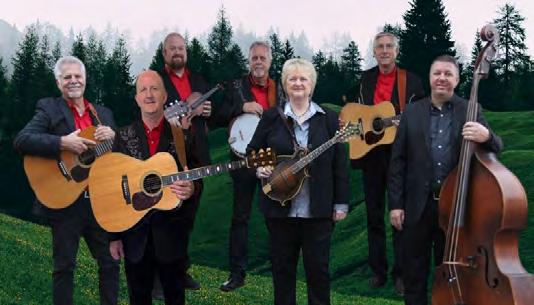
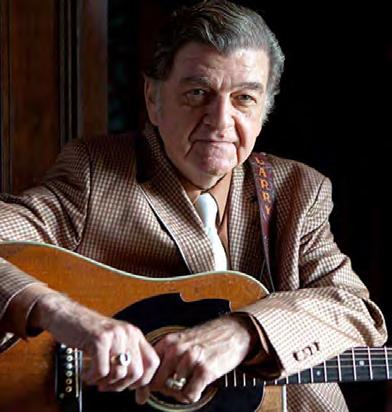


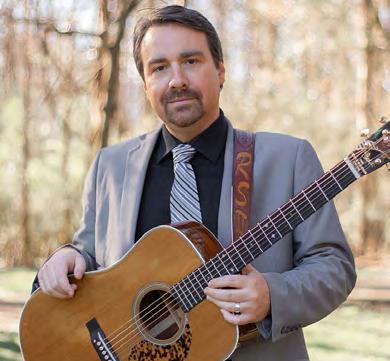
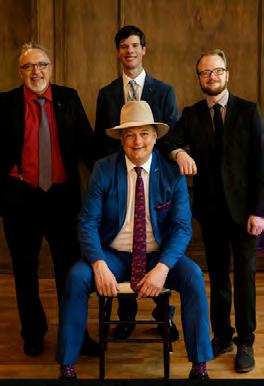
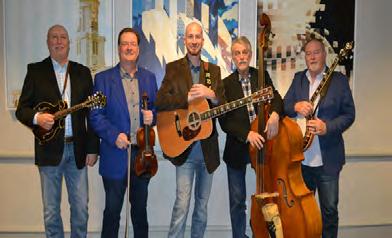
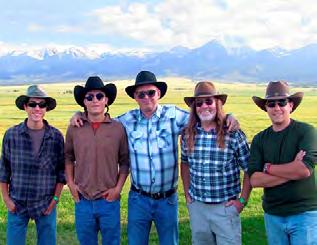

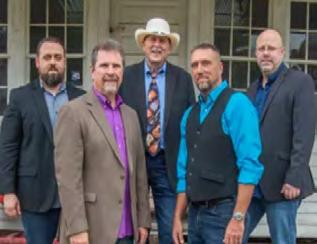

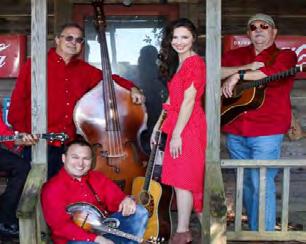


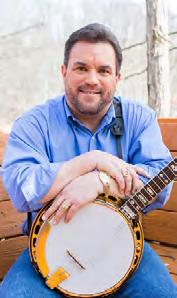





Celebrating 25 years as a bluegrass band next year, Higher Ground Bluegrass is a group we rarely see in music today. Founded in 1998 by banjo and guitar player Duke Weddington, Higher Ground Bluegrass established itself as a premier bluegrass band in New Mexico, a significant challenge since New Mexico is not known for its bluegrass community. Although the band members came and went over the years, the integrity, sound, and mission of Higher Ground Bluegrass never changed.
“Since the band got together almost 25 years ago, we have found that some parts work better than others,” Weddington said. “Everyone knows their role in the band and each song. We know how to communicate non-verbally to present a song in the best way possible.”
The founding band members remained together for only one year, with band member Ron Lujan passing away unexpectedly in the fall of 1999. With that, Weddington wrote a spiritual tribute to Ron titled “Higher Ground” (a nod to their band name), which was released on their first album, Black and White - Faded and Torn, in 2001. Their music included a combination of traditional, authentic, and progressive styles of bluegrass—something they pride themselves in and still embody today while also building upon that sound.
Today, Higher Ground Bluegrass performs original material penned by members of the group
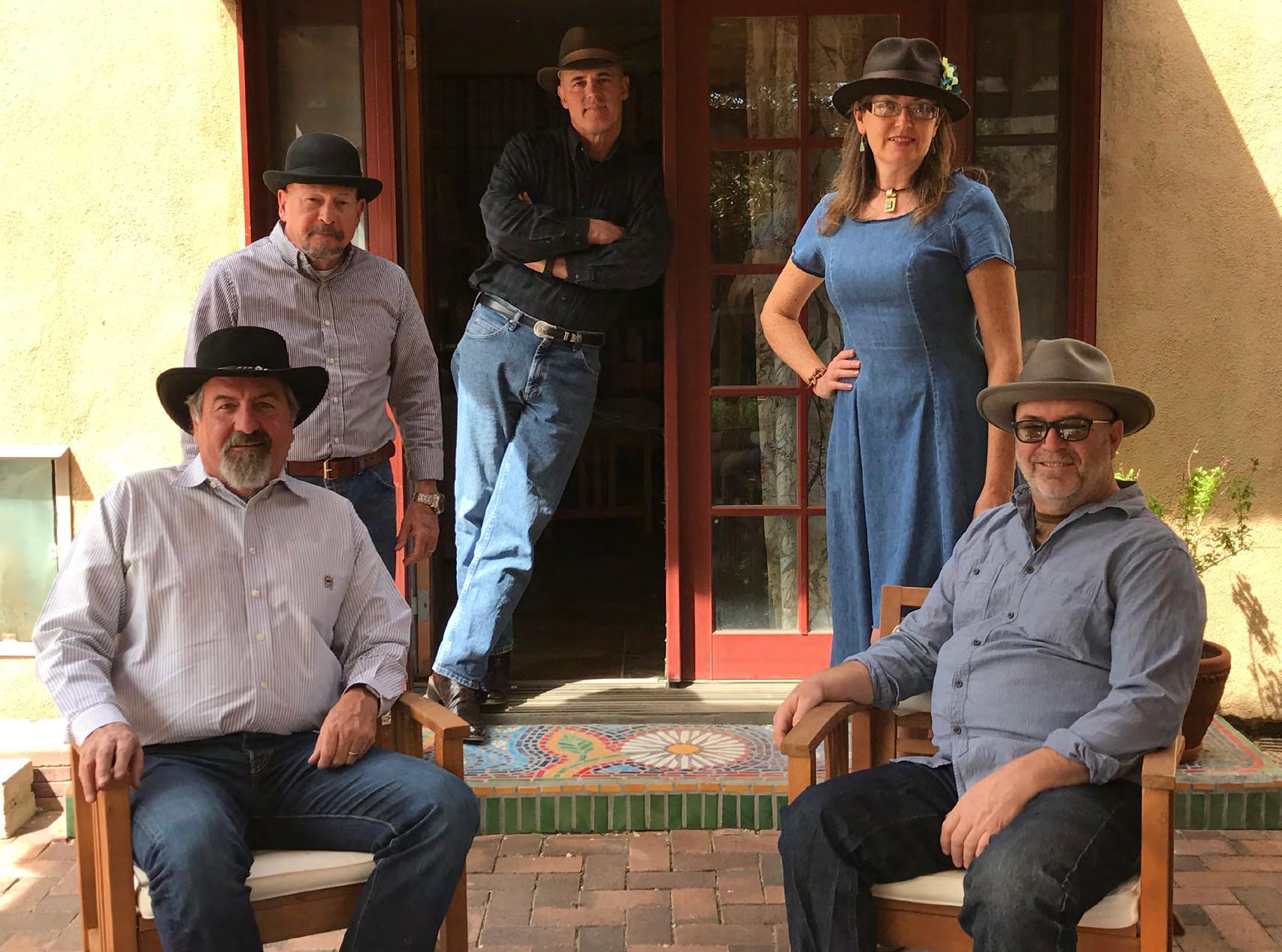
that are both traditional and contemporary, inspired by folk, bluegrass, Celtic, country, and even rock n roll music. Their main priority in creating new material is adding something new and dynamic to what would typically be a traditional sound, making it their own.
Alongside founder Duke Weddington, current band members include Dave Devlin on mandolin and resophonic guitar, Fred Bolton on guitar, Pat Mahoney on fiddle, and Laura Leach-Devlin on bass. Today’s band members have been together since 2010, with the addition of Mahoney on fiddle after the band had been without a fiddle player for years.
“When I first came in, they had an established band,” Mahoney said. “I moved from California, where I was
playing with three bands at the time and in the California Bluegrass Association. Little did I know in moving to New Mexico, I’d still get to play with some talented folks. Duke and I have collaborated and written songs that have become very successful. We are truly a family that happens to play together. We’ve enjoyed it and plan on many more years.”
Coming from northern California, Mahoney said it seemed like everyone was into the classic bluegrass sound. “There wasn’t a lot of progressive bluegrass sound when I was growing up. Now that I’m older, I think we are lucky that our taste has evolved. Bluegrass isn’t a narrow genre of music anymore. It incorporates everything. If we hear a song that sounds fun, we will pick it up and put our twist on it.”
Higher Ground Bluegrass prides itself in offering its interpretation of bluegrass music, extending boundaries into other genres. This different take on their music made them stand out and created a name in bluegrass in a state where bluegrass is not highly popular music.
“New Mexico is not what you would call full of bluegrass bands,” Wellington said.
“Bluegrass is huge in Colorado, just north of us, but some established bands in the state have been around for quite a few years. The opportunities have evolved over the years, from bar gigs to festivals.

Bluegrass is well-received here, but it’s not massive like on the East Coast.”
“In New Mexico, it’s harder to find where to jam than it was when I was in California, but


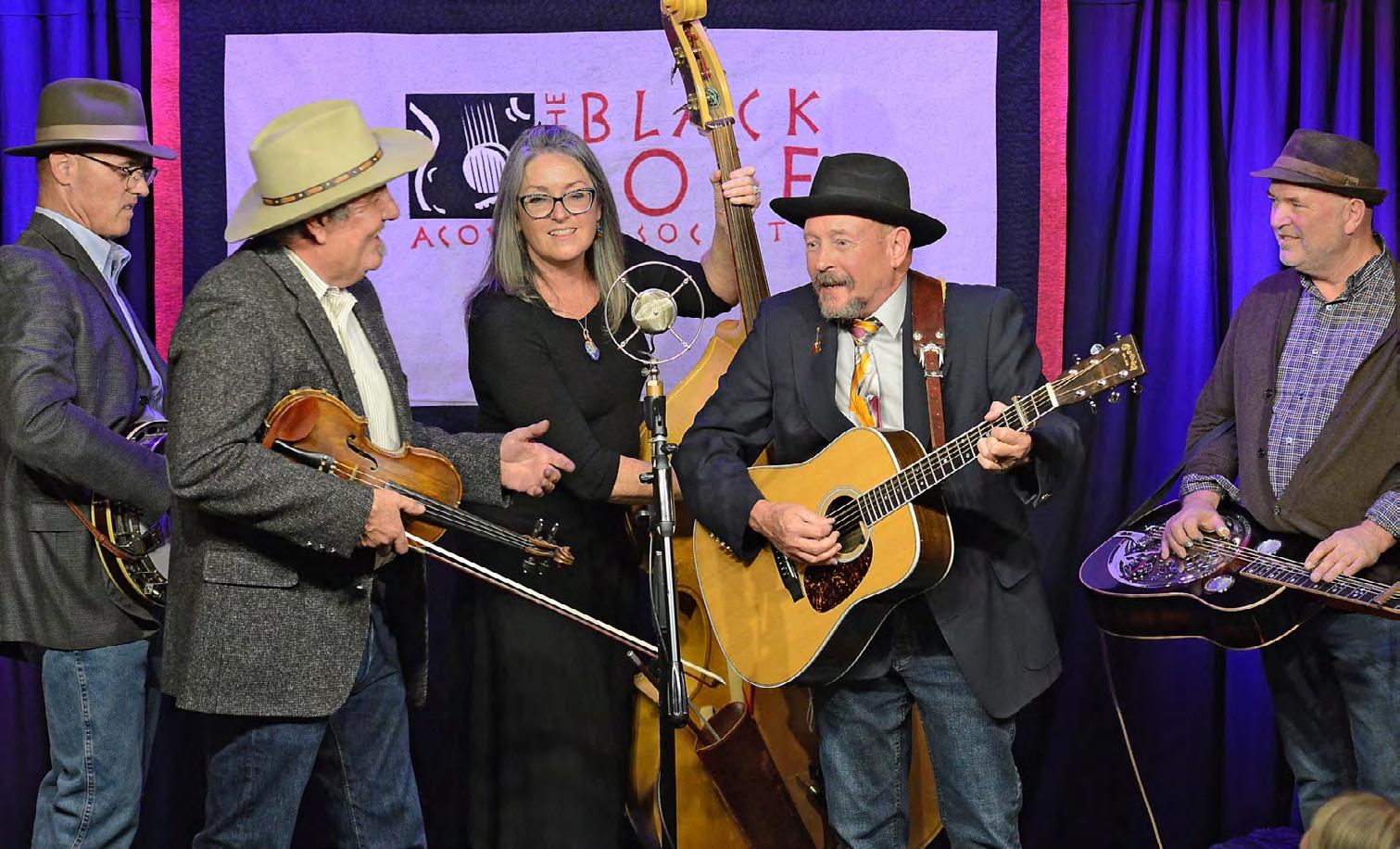
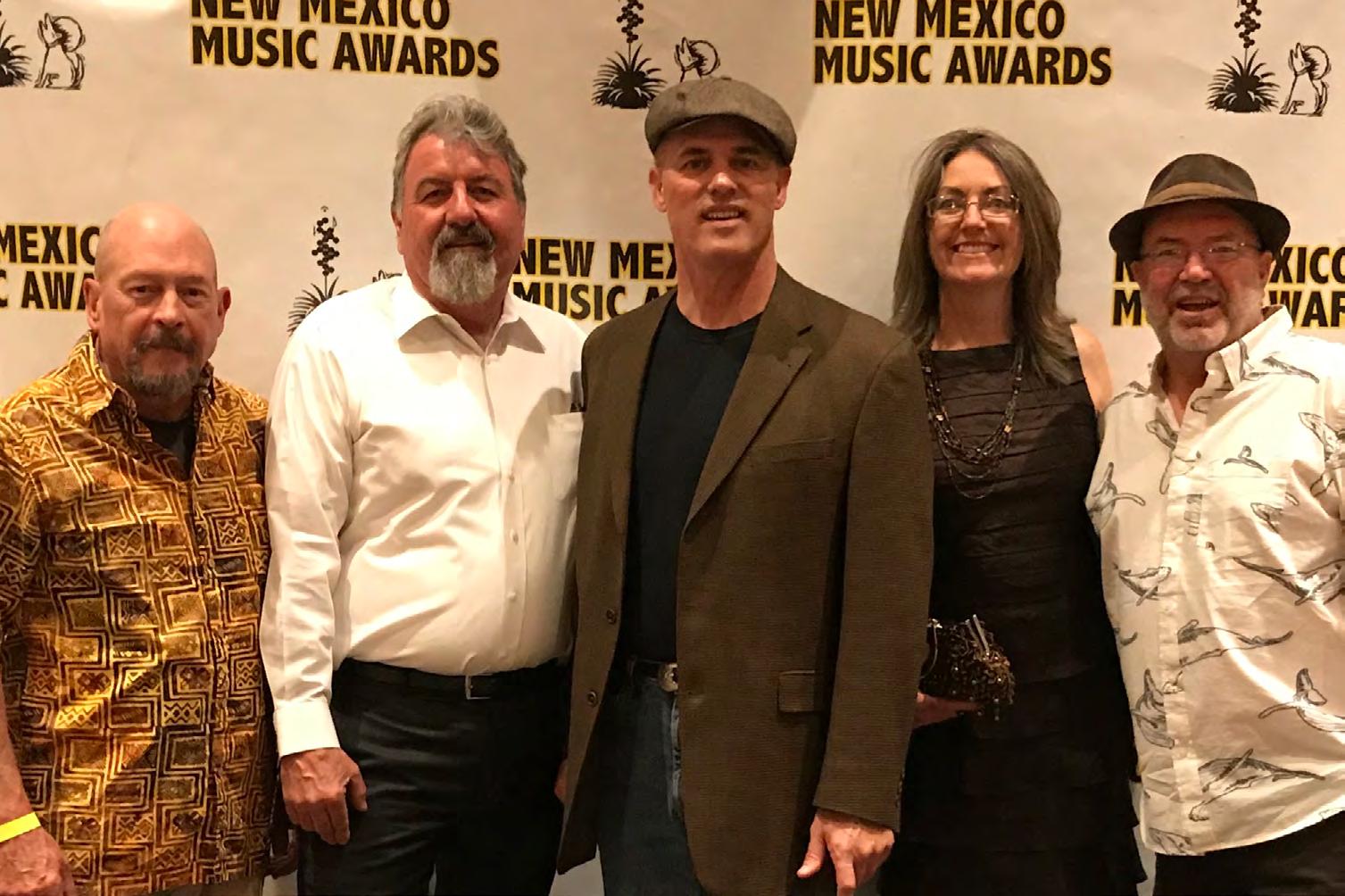
once you get in the circle, it’s a bit easier,” Mahoney said. “It’s about knowing who to talk to to get your foot in the door.”

While more progressive, they prefer a traditional bluegrass performance on stage, sharing one microphone. “It’s more of a show where you get the opportunity to move around like in other genres of music,” Mahoney said. “It brings more movement where it’s more stimulating for the audience. We are smiling and can’t help but grin the whole time. We always say the worst day playing music is better than the best day at work.”
With eight independent albums under its belt and the most recent album, Auburn Sky, nominated for five New Mexico Music Awards, Higher Ground Bluegrass serves as the host band for the Southwest Pickers Annual Bluegrass and Traditional Music Festival and opens for bluegrass icons
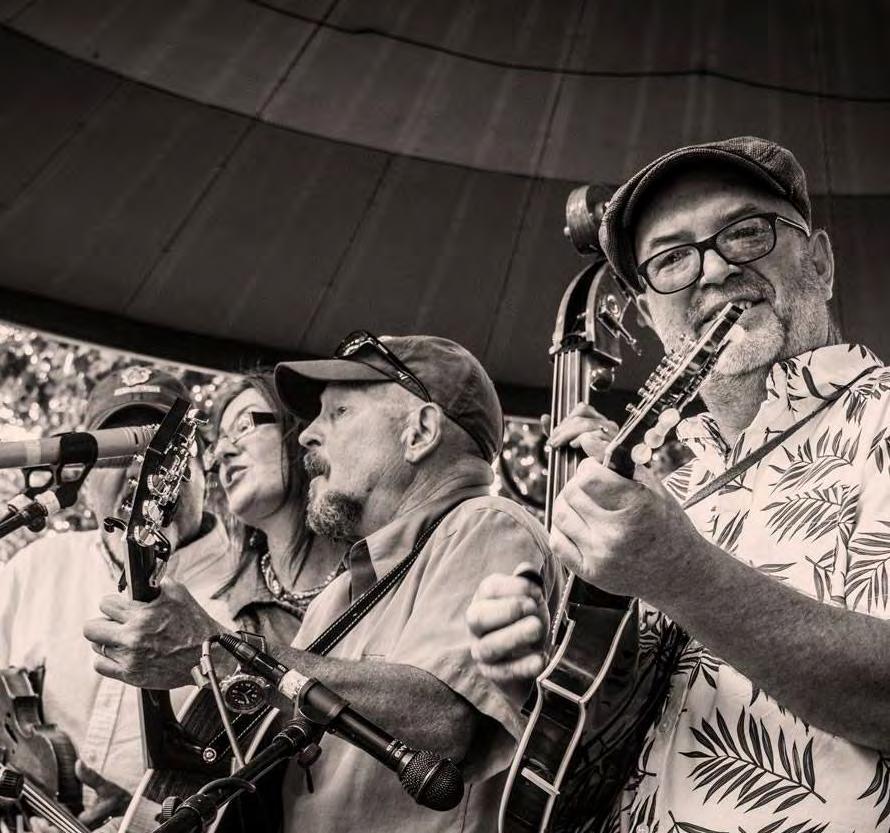
“The Southwest Pickers Annual Bluegrass and Traditional Music Festival has been a big supporter of Higher Ground Bluegrass since the beginning. In 2016, we were asked to be the host band to help with the execution and become the resource for new bands. Our involvement has been more from an execution standpoint—donating our time and fundraising to help them bring in big national acts,” said Wellington. “It’s been so rewarding because people are so approachable in this genre of music. That’s what is so special about bluegrass music,” he continued.
“If you hear our music, you get a good feel of who we are as people,” Mahoney said. “We take a lot from life experiences, and you feel that in what we write. You get a good feel of who we are as musicians and people. We like to brainstorm the personal side and bring it out in our music, so other people relate to it and feel like you’ve written a song just for them. That’s what I enjoy about the writing side, but it takes time to learn how to do it.”
While Higher Ground has had incredible success together as a band, they pride themselves on their original music. “Our upcoming album will be for our 25th anniversary, and it will be all original songs,” said Wellington. “We have gotten even better as songwriters and at relying on each member to bring their special talent to the song. Pat and I spent a lot of time arranging these songs to maintain the impact we want them to have.”
In closing, Mahoney and Weddington reflect on their time together in Higher Ground Bluegrass.
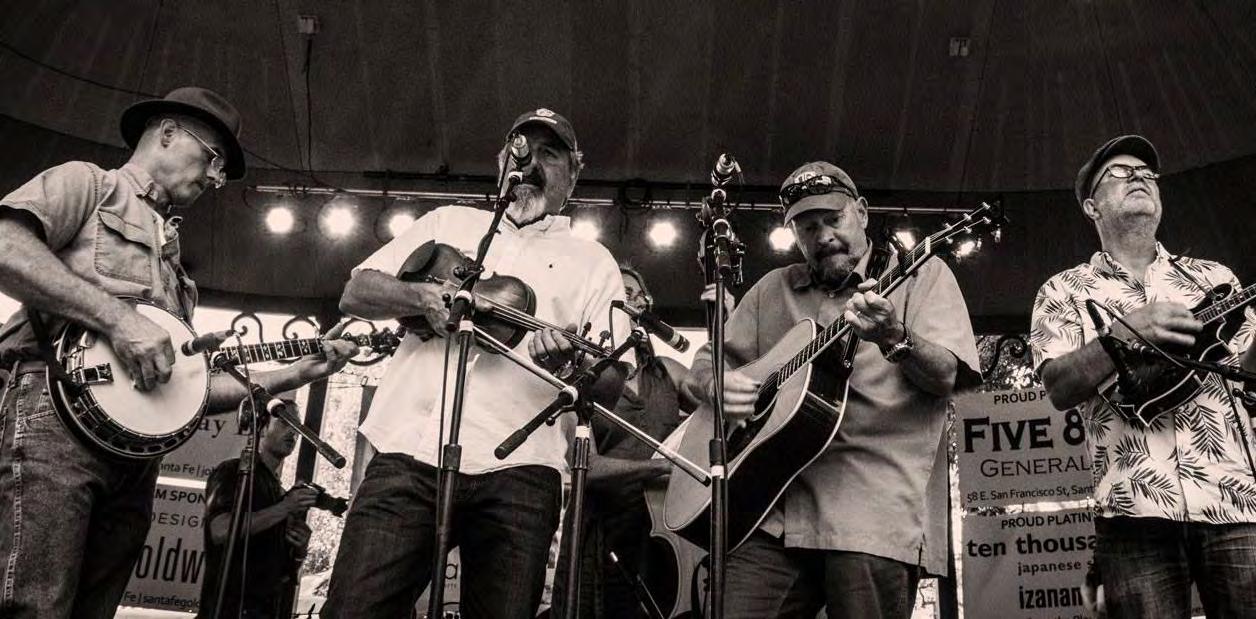
“For the band, we will keep writing and enjoy performing,” said Mahoney. “What we are doing now is what we hope to keep doing for decades.”
“We are a family, and that’s demonstrated by how long we’ve been together as a band. We genuinely enjoy each other’s company,” Weddington said.
 like Peter Rowan, Frank Solivan and Dirty Kitchen, and The Infamous Stringdusters.
like Peter Rowan, Frank Solivan and Dirty Kitchen, and The Infamous Stringdusters.










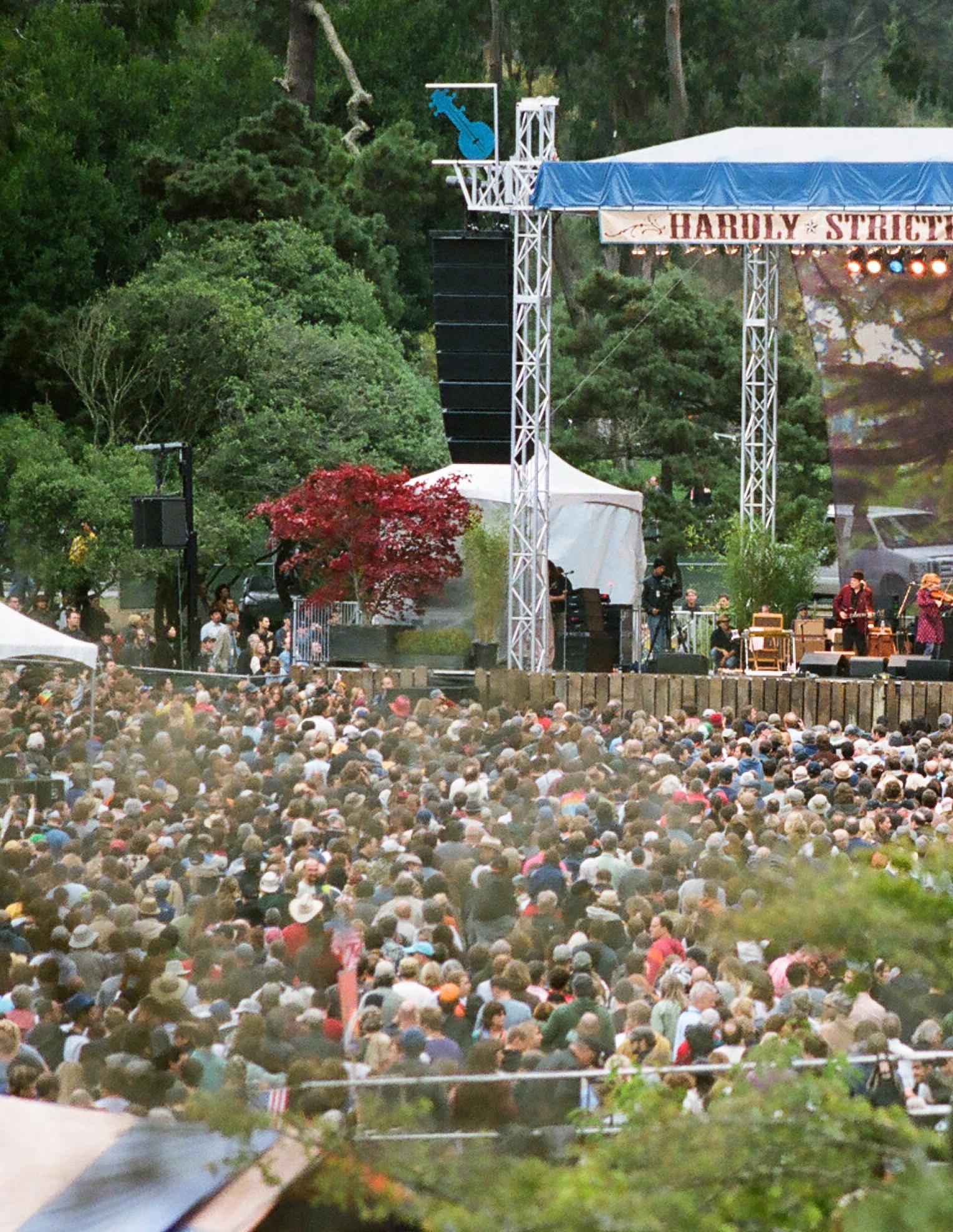 Susan Marquez
Susan Marquez
F. Warren Hellman was a wealthy entrepreneur and philanthropist in the San Francisco area. He co-founded Hellman & Friedman, a multibillion-dollar private equity firm in San Francisco, and Hellman-Ferri Investment Associates, now known as Matrix Partners. A big fan of bluegrass, he started and funded the Hardly Strictly Bluegrass Festival as a gift to the city of San Francisco. While Hellman passed away in 2011, his legacy lives on with the festival, held annually at Golden Gate Park and funded by the Hellman Foundation. “When it first began 22 years ago, the festival was called Strictly Bluegrass,” says Chris Porter, the festival’s music curator in charge of programming. “The festival planners wanted to expand the festival with acts like Steve Earle and The Flatlanders. It became a very Americana-leaning festival, so, on a whim, they renamed it the Hardly Strictly Bluegrass Festival. That kooky name has stuck since 2003, and over time, the festival has expanded to six stages.”
The free concert has no sponsor. “We have a few vendors on site,” says Chris, “otherwise,

it is all about the music.” Chris has been in the music festival and live music business for many years. He was with the Bumbershoot festival in Seattle for 18 years before leaving in 2014. “I love to network, and over the years, I have met a lot of people. I formed my own company, Porter Productions, and I had the opportunity to meet Sherry Sternberg, the executive producer of the Hardly Strictly Bluegrass Festival. I have been here ever since. I have always wanted to work in a job that gives back and have never worked on a more magical event.”
Chris says the Hardly Strictly Bluegrass Festival and the Helman Family Foundation have been very philanthropic in helping bluegrass artists. “During Covid, there was a lot of fundraising, which continues to be an ongoing thing. Over $4 million has been distributed so far.”
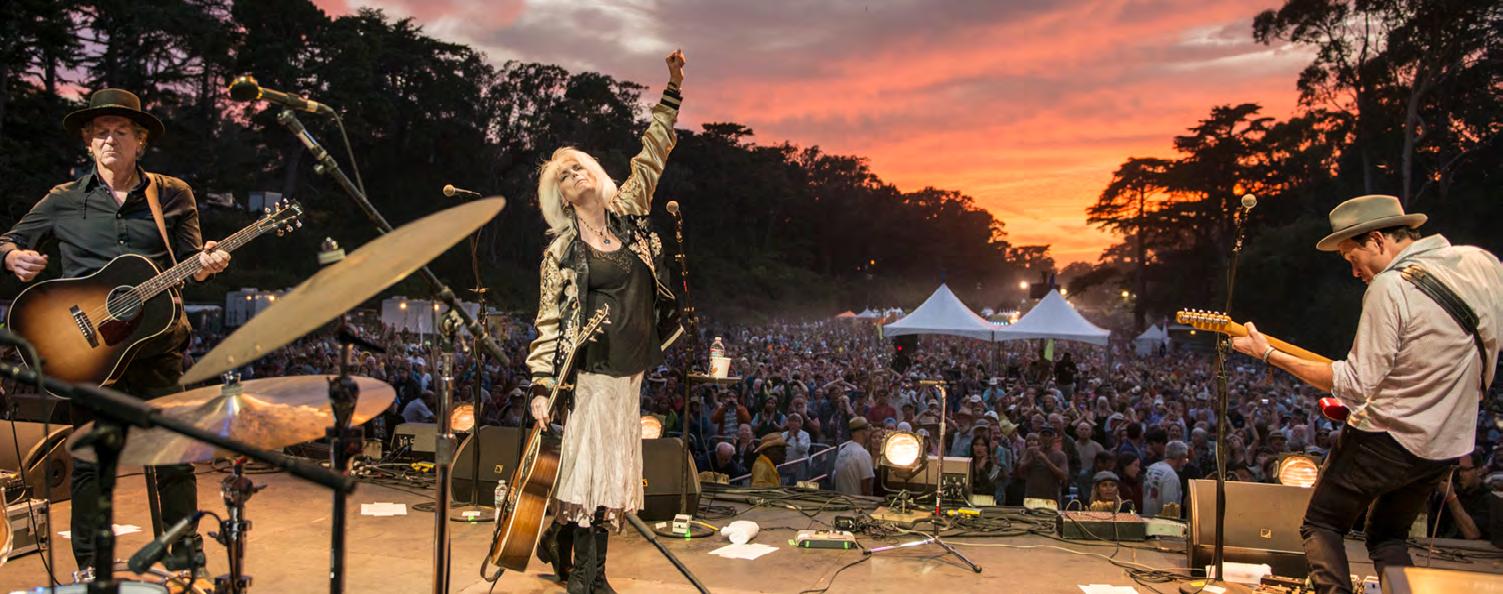
This year’s festival was from September 30 through October 2. In addition to the day’s festival is an organized “Hardly Strictly Out of the Park,” where local restaurants and bars host music events into the night. “We ask each venue to donate $1 to $2 per ticket to go towards the Music in the Schools Today program,” says Chris.
The festival is also broadcast live on HSB TV. “That’s a whole other spin-off of the festival,” says Chris. Acts on the Swan stage and the Towers of Gold stage will be livestreamed during the concert. “The station runs full-length videos of the festival and programming, such as Come What May, which was filmed in New Orleans and San Francisco in 2021 with six artists from both cities. Viewers can also watch programs, including Let the Music Play On & On and Live from Pier 70 sets. Chris says there is also a documentary about Hardly Strictly Bluegrass in the works.
It takes a lot to put on a festival of this magnitude. When you add vendors and security, there are twelve departments with a staff of 350 people, or up to 1.000 workers. Trailers are set up in Hellman Hollow of Golden Gate Park, in the shadows of the iconic Golden Gate Bridge. Workers are dispatched in 70 golf carts, and the sound of walkie-talkies fills the air before the sound of banjos, fiddles, guitars, and basses take over.

“The venue is simply beautiful,” says Chris. “It has an otherworldly feel to it. It is a large meadow, and everyone is happy. This event is always such a joy. We get great feedback from the performers about the festival. We treat them right. And this time of year, the weather is almost always really nice.”
A “festival etiquette” list is on the Hardly Strictly Bluegrass website, and it seems the festival staff has thought of everything, from bringing low-backed chairs to not selling drugs.




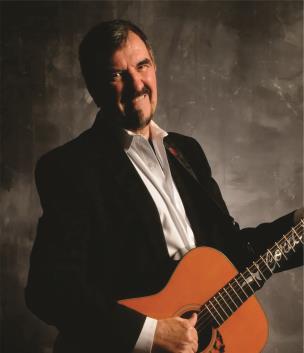




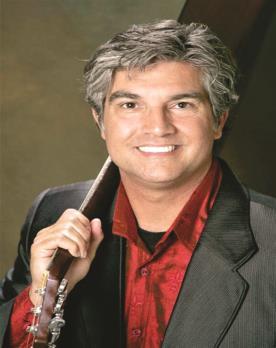


When choosing a name for their bluegrass band, banjo player Kalle Tuovinen and his bandmates, Johannes Oksanen on mandolin, Benjamin Oksanen on guitar, and Hannu Vanhatalo on bass, looked back to the good ol’ days of the Grand Ole Opry when Lester Flatt and Earl Scruggs sang a jingle promoting the show’s longtime sponsor, Martha White. The Tennessee-based company made flour, cornmeal, and baking mixes, but the jingle promoted Martha White’s self-rising flour. “I give Johannes the credit for coming up with the name,” says Kalle. “We all know Martha White’s self-rising flour because of Flatt and Scruggs. We agreed that Self Rising Flour is a fun name, so why not?”
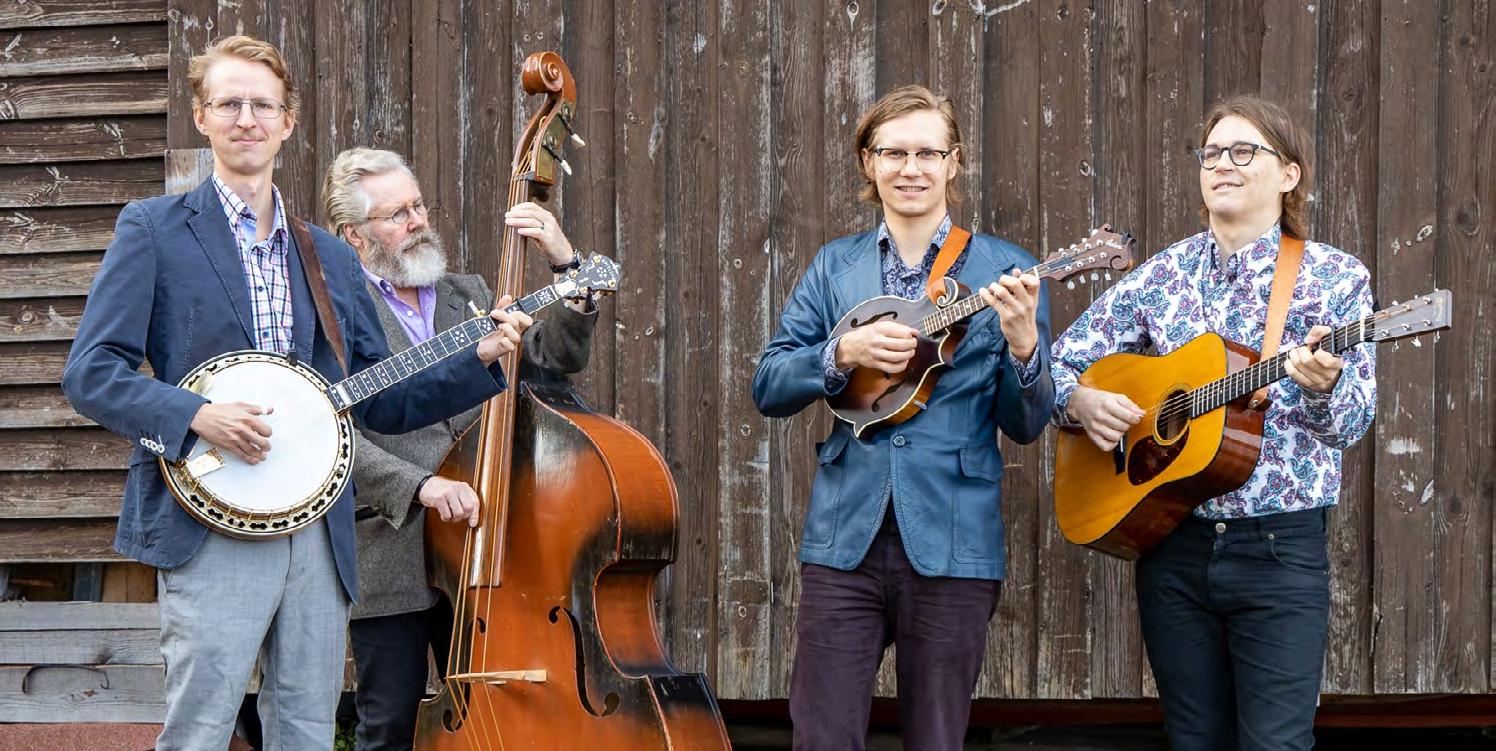
The names of the band members are Finnish. While most people don’t think of Finland as a hotbed of bluegrass music, Self Rising Flour is making a name for itself in European bluegrass circles. “I guess most people in Finland are not familiar with bluegrass, but when they come to see our show, they all seem to enjoy it,” Kalle says. “Music-oriented audiences are more likely to have heard of it. They know the movies Deliverance and Oh Brother, Where Art Thou? so we will get requests for ‘Dueling Banjos,’ ‘Man of Constant Sorrow,’ and ‘Cotton Eyed Joe.’ Country music, in general, is more known, so we play some Elvis songs and John Denver’s ‘Country Roads,’ which seems to work well with audiences.”
You may be wondering how these Finnish musicians came to form a bluegrass band. “I played electric guitar since I was a child,” recalls Kalle. “In high school, I wasn’t happy with the rock and metal music I was playing. I guess I was looking for something more genuine. Somehow I got the idea to buy a banjo and bluegrass banjo guidebook. At the time, I didn’t know what bluegrass music was. But I found out there was a bluegrass band workshop in Helsinki. Wasel Arar has been running the workshop for over twenty years, and he has become my mentor. I started going there, and within a few months, I was hooked on bluegrass music.”
Johannes says he stumbled into bluegrass while browsing through records in the library’s folk records category. The first record he found was from The Greenbriar Boys. Johannes’ love of bluegrass music influenced his brother, Benjamin. Hannu heard bluegrass records from his friend in the early 1980s, but it took a while for him to start loving it. “I guess the drive and rhythm of the music are what makes it so exciting,” says Kalle. “And, of course, the banjo’s sound and singing harmonies. For me, a huge motivation was the social aspect of bluegrass. I like the community and the jamming. I think it is the perfect genre for jamming, with only a few chords and simple song structures.”
Johannes was in the same bluegrass workshop as Kalle, and during a festival, in the summer of 2018, the two jammed a lot. “We decided to keep playing together regularly, and in 2019 his brother Benjamin joined us on the guitar. After a couple of bass players played with us for a while, we asked Hannu to join the band in 2020. I had played with Hannu before in other bands.”
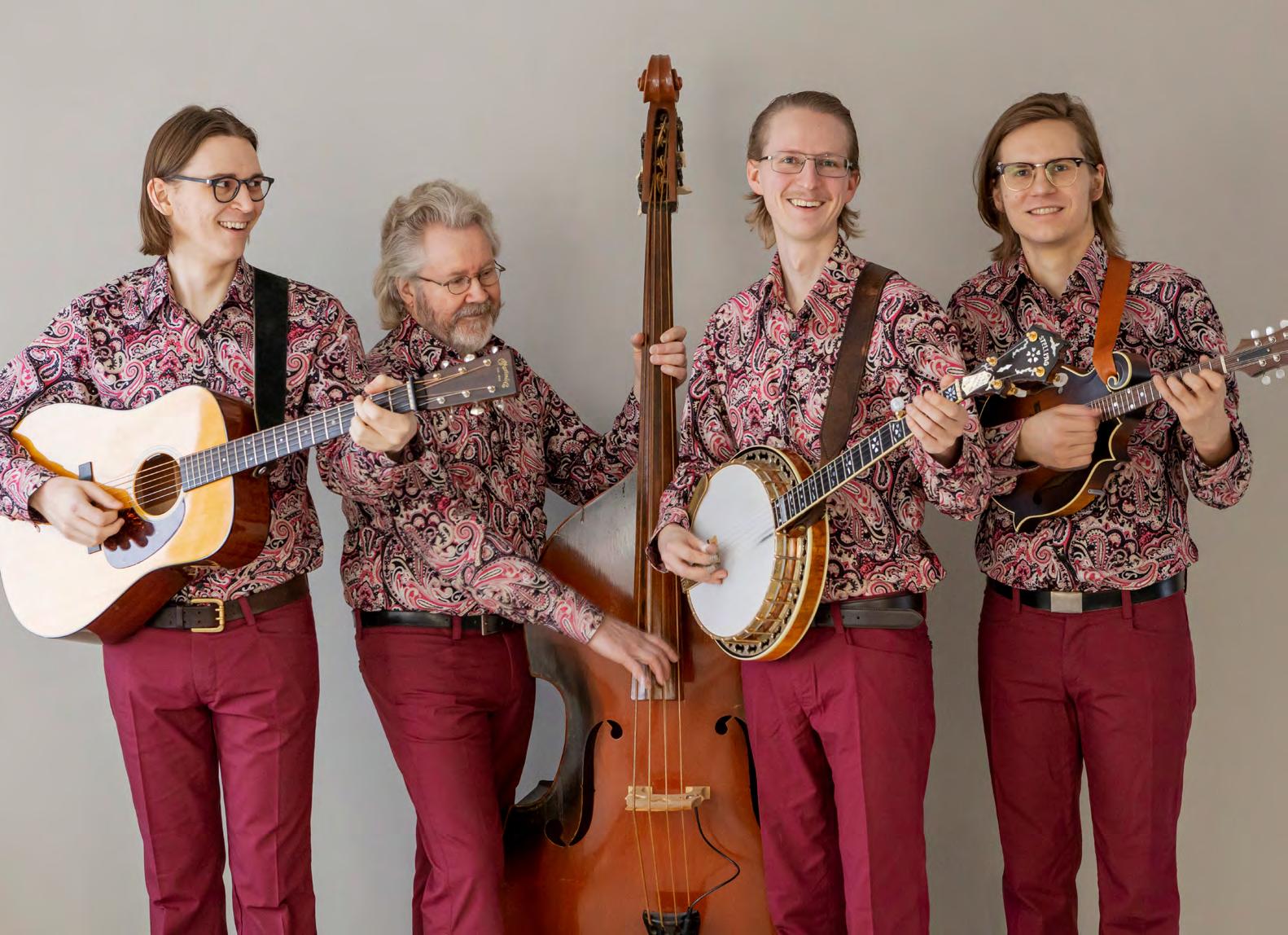
Kalle says their traditional sound is very much influenced by listening to and being inspired by iconic bluegrass artists like the Stanley Brothers, Bill Monroe, Flatt and Scruggs, The Bluegrass Album Band, JD Crowe, and Tony Rice. “My favorite lead singers are Keith Whitley and Charlie Sizemore. I think our traditional sound comes from listening to bluegrass so much. I couldn’t play it any other way. The music needs to have a solid beat all the time and enough edge.” Self Rising Flour’s three-part harmonies are arranged and rehearsed with care. “Johannes can easily sing the highest tenor part, and Benjamin usually sings the lower baritone part.”
Even their visual style is traditional, with a nod to the 1970s. “Johannes knew of a website in Germany that sells vintage 70s fashions, and we had seen photos of the 70s bluegrass bands and liked the look. We wanted to look as cool as they did, so we bought paisley shirts and bell-bottomed pants. Now our image and graphic designs are heavily fixed in that theme.”
The band has played about a dozen gigs this year, mostly in bars, restaurants, and a few festivals. “We do the booking ourselves. We’ll be playing Tiveden Americana in Sweden, which will be our first gig outside of Finland, and we are very excited about that. A well-played show is the best promotion for the band, and that has gotten us new gigs.”

The band has released two recordings, both in English. Their debut album, All Original, was recorded in early 2021 and released that summer. A Christmas single, “Santa Gave Me a Banjo,” was written by Kalle and released in November 2021. “I started learning bluegrass in 2013, and I tried writing some songs then, but they weren’t good,” Kalle recalls. “I wrote my first complete song in the summer of 2019 while driving on a long journey home from a folk music festival. That song was recorded on our debut album. When our band got together, that gave me the motivation to write. I wrote ten songs for our album, two of which are instrumentals.” Kalle is in the process of writing songs for an album to be recorded and released next year. While they love music, the band members all have day jobs. Johannes and Benjamin are both acoustic engineers, which helps make the band sound good in the studio and on stage. Hannu is an insurance broker with a business that handles performing artists’ billing, so he handles the band’s finances. Kalle works in a business that builds and repairs boats and works part-time for another company in production. “Most of the gigs we do are on weekends, so it works out well for us,” he says. Kalle also fills in on banjo and guitar for another Finnish bluegrass band, Jussi Syren and The Groundbreakers.

Kalle says that he hopes the band can travel to the United States in the future. “It takes a lot of effort to get there, with work permits and such. I guess our best bet will be the IBMA’s World of Bluegrass Event. All bands can apply, and foreign bands can sometimes get a grant to cover traveling expenses.” Until then, Self Rising Flour may possibly be seen at Rootsinpyhtää Bluegrass, a festival held each summer in Finland since 1988. “Artists like Hot Rize, Rhonda Vincent, and James King have all played there,” says Kalle.

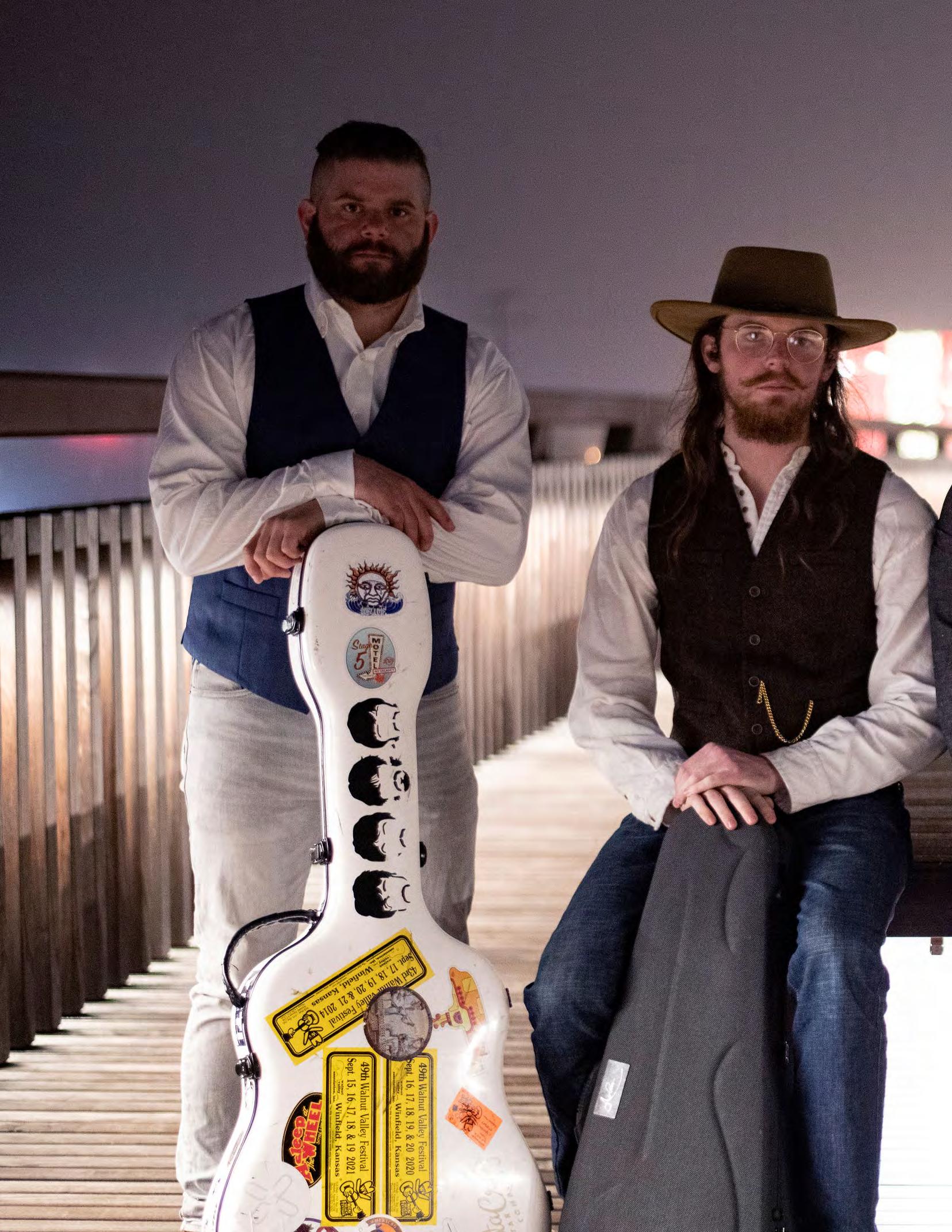
While the band Midnight Hollow has only been together for one year, the history going back at least a decade helped the band members meld quickly, finding their footing in the bluegrass world.

Banjo picker Joey Shann has played in different groups with bassist Chance Coppedge for ten years. Both live in Oklahoma City, but Joey resided in Kentucky for a while, where he played banjo for Dave Adkins. “That was a dream come true for me,” he says. While in Kentucky, Joey married his wife, Emily, and although they both loved the time they had living in the mountains of eastern Kentucky, they were both ready to be back around family. “It was a nearly 15-hour trip to go home,” he says. The couple packed up and returned to Oklahoma.
Joey met Joe Kahlden, a flat-picker guitar player who also sings and writes songs. “I had known Joe for a long time,” Joey says. “We always jammed together at festivals, so when I moved back, Joe and I decided to put
a band together with Chance.” They needed a mandolin player. Joe had played in various groups with Sam Conrey, a Memphis native with roots in blues and rock. Sam had only recently picked up the mandolin, but he was good and getting better.
Next, they needed a name for the band. “We knocked around a lot of ideas,” Joe recalls, “but Chance’s wife, Bekka, came up with Midnight Hollow, and we all liked the sound of it.” After practicing for two or three months, the band was ready to hit the road. “We play just about every weekend now.” The band is new, but the musicians have ample experience under their belts. Joey was the State Banjo Champion in both Oklahoma and Kentucky in 2018. In addition to playing the banjo, the self-taught musician plays the piano and dobro. Chance is a music instructor at a music academy and musical director at a church and has played with Eric Hinson in Branson. Joe has played with his family’s band, opening for Ricky Skaggs and Kentucky Thunder. Sam, also a multi-instrumentalist, made the transition
Susan Marquezfrom blues music to bluegrass after sitting in on a few jam sessions at a craft beer house in Oklahoma.
“It has been a natural flow the whole time we have been together,” says Joey. “We just have the right chemistry together, and that’s a huge thing for me.” After playing music full-time for ten years, Covid put a damper on Joey’s career. “I went from playing forty to fifty shows in a year to only ten.” He went to work for a heating, air, and refrigeration company to make ends meet.
Joe has had a career in law enforcement, most recently as a detective. If he isn’t working, he is teaching music or playing music somewhere. Chance also plays in a couple of country bands in addition to teaching music. And Sam has a technical job at a machine shop. “All of our jobs are good with scheduling,” Joey says. “We are all able to make it work to play together most weekends.”
While the band plays many gigs out of state, Joey says they are growing a strong local following in Oklahoma. The audience’s response to their music has been strong. “We played at Mark Gaynier’s Milan Music Fest in Michigan in August and got a good response.” With a foot in the traditional bluegrass world, Midnight Hollow enjoys writing their original songs with a contemporary spin. “I’d say eighty to ninety percent of what we do is original material,” says Joey. “Joe is a great writer, and he writes most of our songs, although Sam has written a couple as well.” The band’s sound is both contemporary and traditional. “We throw in a few traditional songs people know at our shows.”
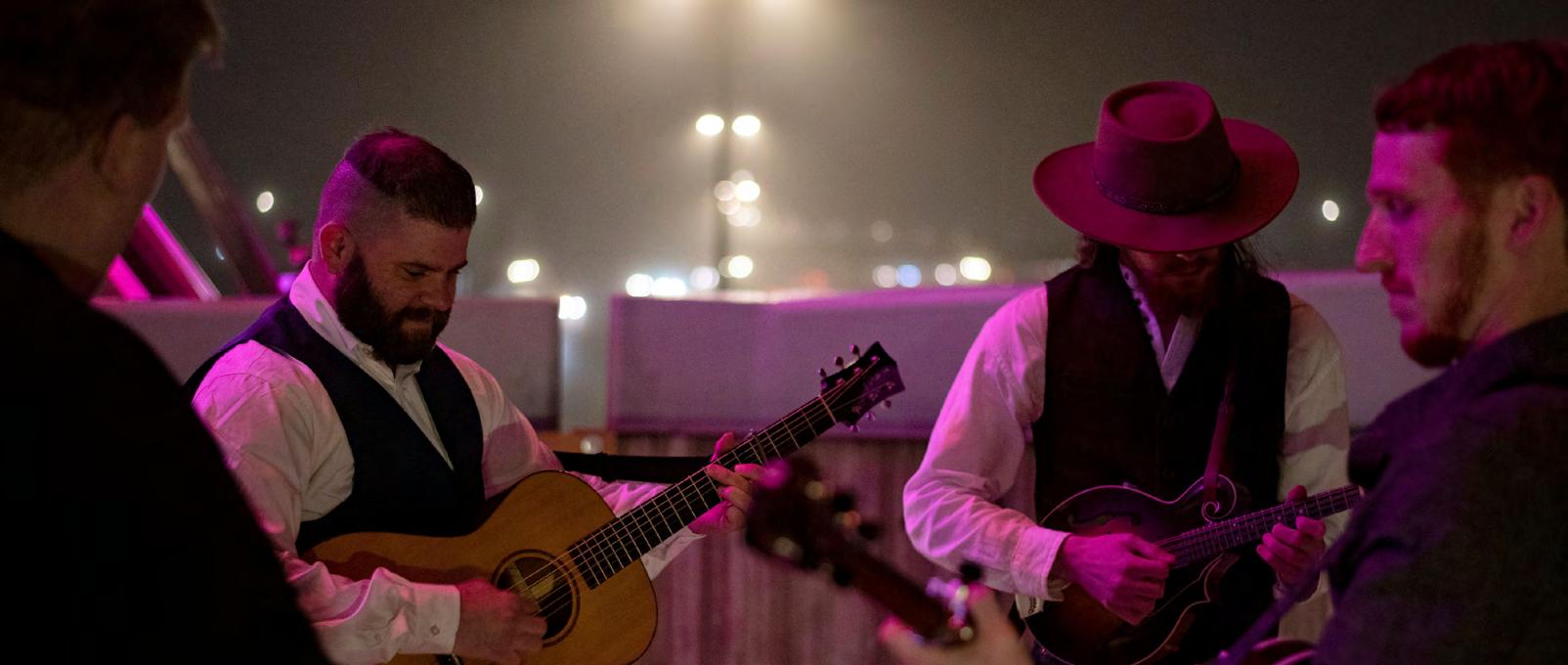
Midnight Hollow’s single, Can’t Make Things Right, was written by Joe Kahlden and released last spring. A heartfelt take on life’s real moments, the lyrics are relatable, and the tune is catchy, with solid harmonies and instrumentals. To hear it, one would be hard-pressed to believe that Sam has been playing the mandolin for a short time.
“We will have a full album available on all platforms in a couple of months,” says Joey. “Trustin Baker filled in with fiddle work on the album, which we are excited about. Trustin is a two-time Grand Master fiddle champion.”
Hear Can’t Make Things Right, or visit the Midnight Hollow website at www. officialmidnighthollow.com.


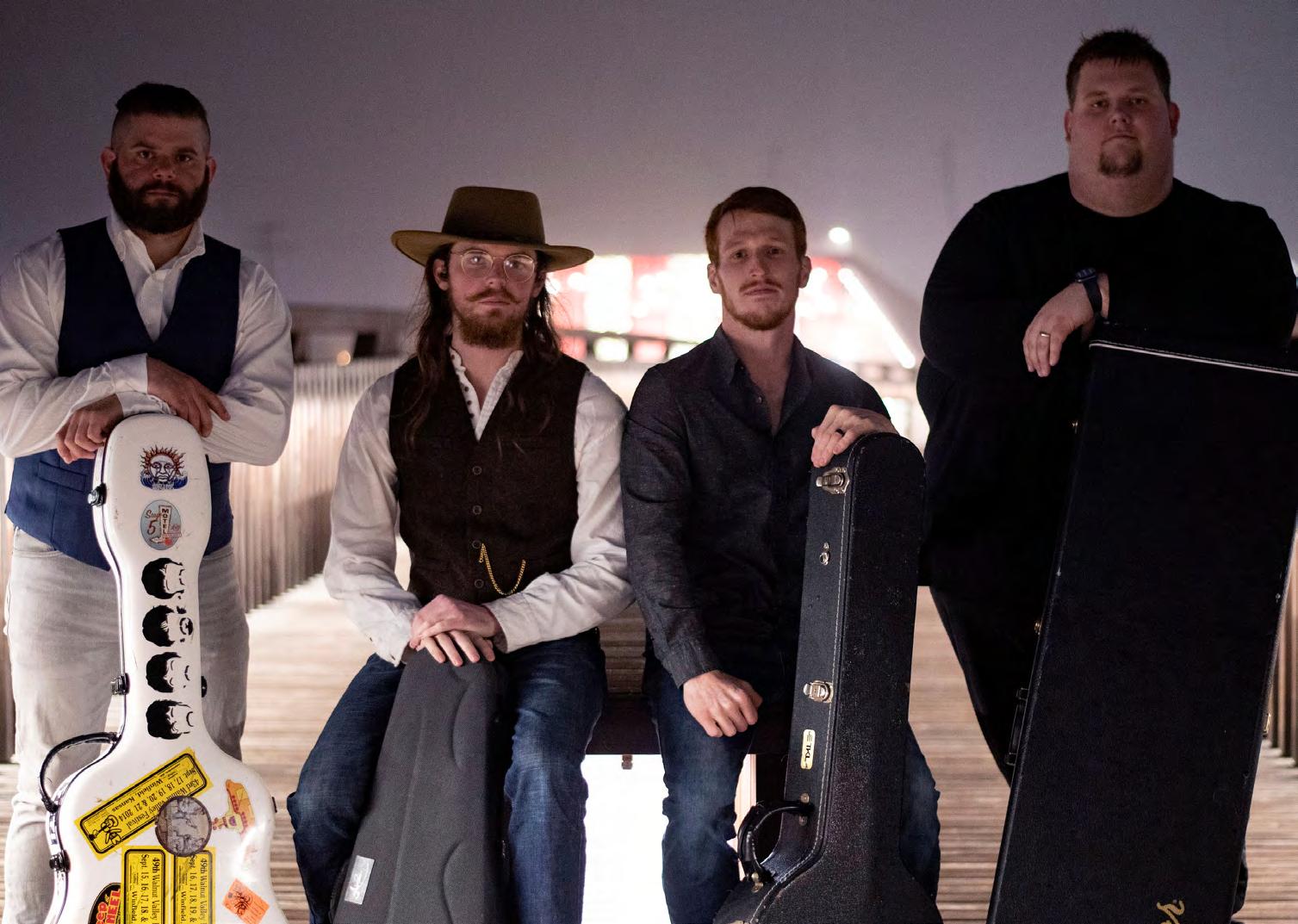
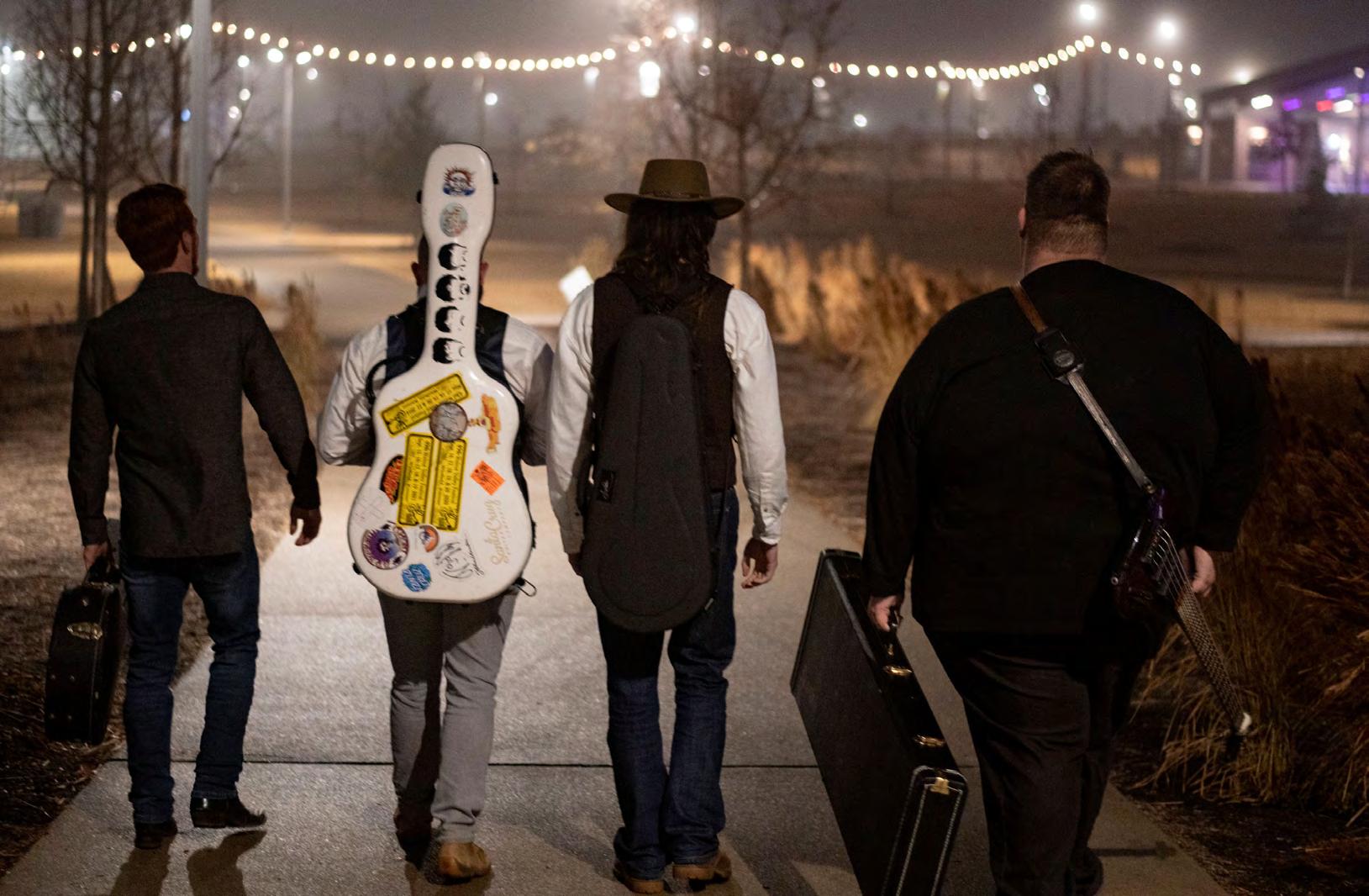
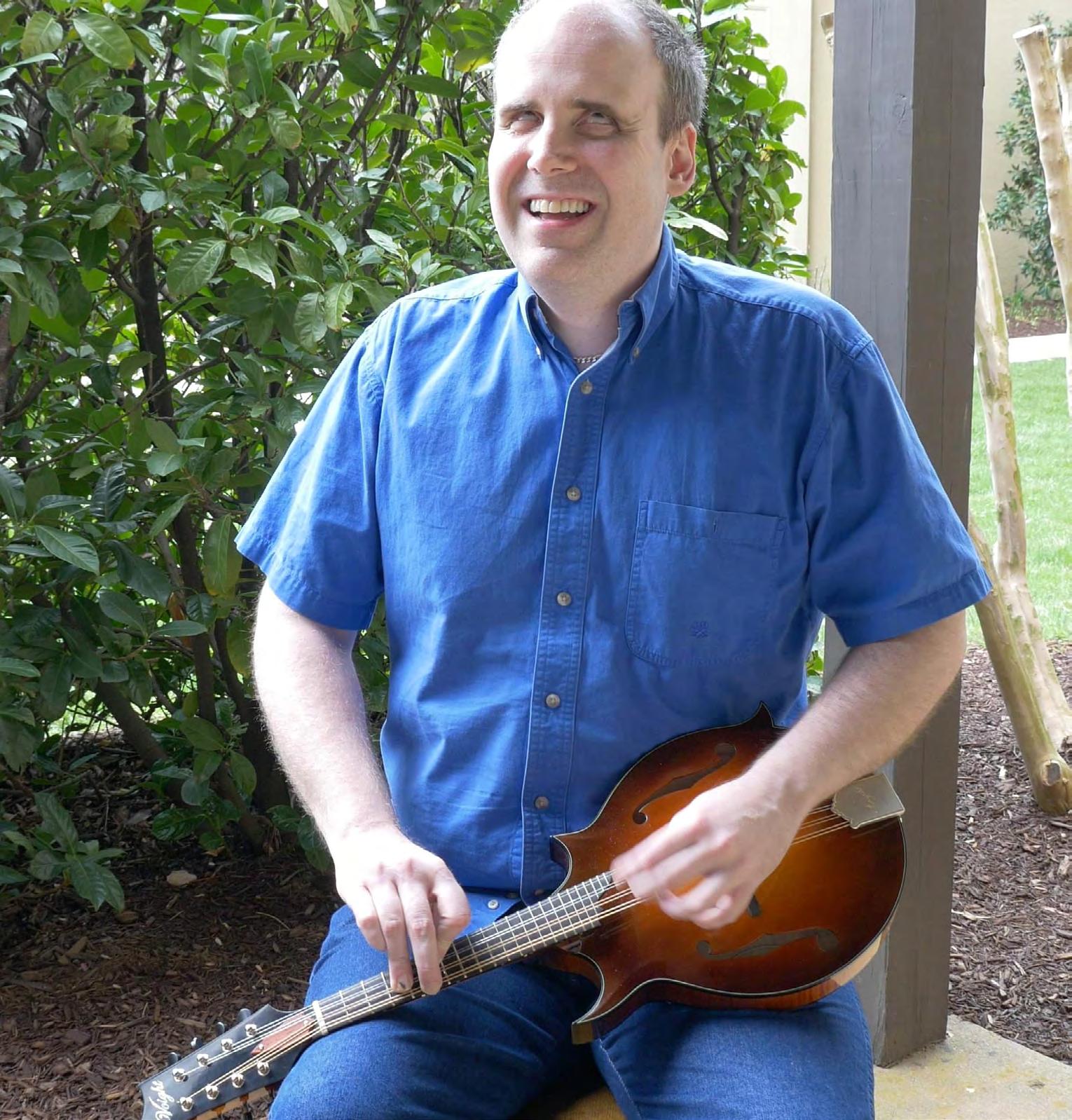


Rory Hoffman sees the world in a different way. He loves to reimagine familiar songs with unexpected musical arrangements, such as his gypsy jazz version of the Star Wars Theme or his bossa nova treatment of the country song Oh Lonesome Me by Don Gibson. He has even done a bluegrass version of the Cole Porter standard: It’s Alright With Me.
A seasoned performer, Rory has been on the stage since he was three years old. “I started singing and then began playing drums in our family’s band. I ended up playing drums, harmonica, and singing.” The band was Roland Hoffman and the Believers, which included his father, Roland Hoffman, his older twin sisters, and his younger brother. “Mom sold merchandise in addition to making sure we had clean clothes. She was also our road manager.”
The family lived in rural South Dakota. “I grew up on a small ranch on the border of North Dakota and South Dakota,” Rory says. “We had a North Dakota telephone number and a South Dakota address.” In addition to the drums, Rory learned to play guitar early on. “I have a unique style of playing. At the age of three, I couldn’t fit my hand around the neck of the guitar, so I figured out how I could make it work. I play overhand. As a child, I flopped the guitar on my lap and learned to play chords and licks. As I grew older, I kept playing that way be cause it worked for me. I didn’t want to learn a new way of playing.”
Today Rory’s brother works as a drummer and bass player in Austin, where he lives. Rory’s sisters still play music for fun. Rory lives and works in Nashville. “Being in Nashville was a turning point for my career. I started visiting several times a year starting in 2000 and made the move in 2008.”
Rory always knew he would be a musician. “It’s been a crazy career for me. When I was playing with our family band, I wasn’t sure what I would be doing later in life, but I never imagined some of the things I have had the opportunity to do.”
Rory’s career was slowly taking off from starting a recording and produc tion company with a friend back in South Dakota to having a television show on the Christian Network. “There just wasn’t enough opportunity for me in rural North Dakota,” Rory says. Rory has a musical versatility that is

B singer by the name of Swamp Dawg. We did a bluegrass record of all his old R & B hits. I played banjo, guitar, and mandolin on the album. I look forward to that record coming out. It is always fun to be in the studio.”

awe-inspiring. He currently plays in jazz trios and a polka band with Alex Meixner. “We are in our busy season,” he laughs. “I like the variety of what I do. I recently played with an old R &
an (formerly with New Grass Revival). “That’s what got me on the Grand Ole Opry for the first time. I also played piano and harmonica for Ricky Skaggs when he was doing a resurgence of his
Rory has also played with John Cow
country stuff.” Rory enjoys “statement-making” music. “I have my feet in a lot of different worlds.”
Rory is looking forward to performing with the Nashville Symphony soon. “You’ll never believe what instrument I’ll be playing.” Rory plays many instruments, including guitar, saxophone, clarinet, accordion, bass, harmonica, mandolin, drums, piano, and banjo. But when he performs with the Symphony, he won’t have to arrive with anything but himself and a tube of ChapStick. “I’m going to whistle,” he laughs. “No kidding. They needed someone to whistle in the Symphony’s performance of Into the Woods Suite by Stephen Sondheim, so they called the Nashville Musicians Association and asked for the best whistler in town. Turns out I’m one of the few professional whistlers in this area. It’s just another part of the weird, cool stuff I like to do.”

With all that Rory does, it may be hard to realize that he is blind. “I was born with no sight, as were all my siblings,” he says. His parents were both sighted and reared their children to be independent. Rory has a girlfriend who is legally blind. “I met her online during the pandemic,” he says. “She moved to Nashville, and we get along well together.”



Doc Watson has influenced many, but few have achieved the legacy of this inimitable traditional musician who continues to inspire. The impact of his life as an artist and demeanor as a personality will soon be celebrated through a concert series, “Doc at 100,” commemorating the sev en-time Grammy Award winner’s birth in 1923.
The concert series is co-produced by musician Jack Hin shelwood and music scholar Ted Olson and includes performers Hinshelwood, Wayne Henderson, T. Michael Coleman, and Jack Lawrence. Hinshelwood said the con cert series idea came about after Olson wrote the book that accompanies last year’s release of the 4-CD box set titled “Doc Watson—Life’s Work: A Retrospective.” Olson recent ly received the IBMA 2022 Industry Award for Best Liner Notes for the book.

“We thought it would be a good time to put something together to celebrate Doc’s legacy,” Hinshelwood said, add ing they thought the presentations/performances should be “humanities rich.” The result is a series of concerts that offer music, storytelling, analysis of Watson’s impact, and more.

“There are four of us playing the music Doc put his mark on,” Hinshelwood said, adding that two of the show’s per formers have backgrounds playing with the legend. “T. Michael played bass, and Jack Lawrence was side-man on guitar, so obviously, they have great insights into Doc and great stories. Wayne and Doc also became pretty good friends.”
Hinshelwood said music history plays a big role.
“Ted will be talking about Doc’s legacy,” he said. The first hour will be individual presentations where Hinshelwood and the other three artists will each play short sets “of three songs or so.” Then all four will be out together onstage.
Karen Martinez Bachman“The second half of the show will be Doc’s ‘best loved’ repertoire, which is huge,” Hinshel wood said.
Hinshelwood expects to add more dates, but right now, four shows are on the slate: Roa noke, VA, on November 5; Alexandria, VA, on February 26; Asheville, NC, on March 25; and Emory, VA, on May 8. Tickets and updated information about added performances are available at Docat100.com.
“Doc at 100” also aims to familiarize new fans with the music and persona of Doc Watson.
“He was very authentic and genuine, and that really connected people with him,” Hin shelwood said. “He had opportunities he could have pursued in places like Nashville, but family and community were important to him, so he stayed in western North Carolina.”
Hinshelwood said the man’s character is summed up succinctly by the words engraved on a Doc Watson statue in Boone, North Carolina. “Just one of the People,” it reads.

“It’s one thing to say, ‘I love this artist’s music,’ and it’s another to say, ‘I love this artist as a person.’ And many people would say both about Doc,” he suggested.
“Any time you’re a pioneer, you’re gonna garner people’s attention,” he continued. “He was a pioneer of the flatpicking on the guitar.”
Hinshelwood said one plus in getting new fans onboard to appreciate the Doc Watson leg acy – and something that “catches a lot of people by surprise” when they first begin delv ing deeply into Watson’s discography – is the cross-genre breadth of his recordings.
“He was firmly rooted in traditional music, in gospel and old-time string bands,” Hin shelwood explained, “but he was learning show tunes and all kinds of music that his con temporaries in traditional music just weren’t doing. He was like a sponge. He learned the popular music…he learned the show tunes.”
“Eventually,” Hinshelwood continued, “he came to record things like ‘Knights in White Satin’... it’s pretty far from things like ‘Cripple Creek’ on the banjo.”
He sums up nicely the reasons he enjoys Doc Watson so much.
“His blues is amazing, his gospel, his bluegrass…he was an Americana guitarist before Americana was cool.”

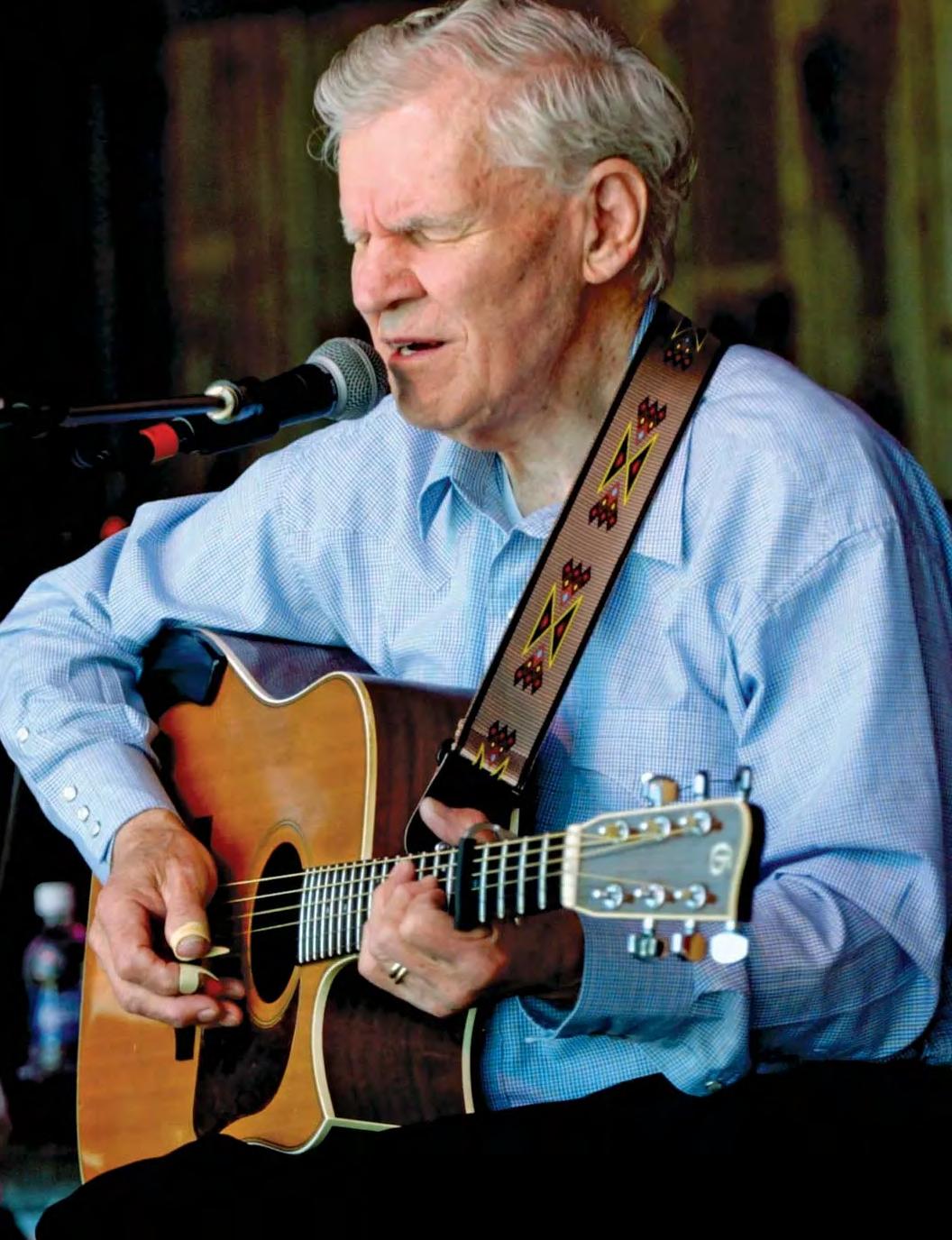
While many sibling bands are found in bluegrass, The GillyGirls Band claim a rare status: They’re a group featuring two sets of twins from the same family.
“Being two sets of twins in a band is unique, but it’s also a lot of fun,” explained 16-year-old Jillian Gillingham, who plays bass, mandolin, and banjo. “Being with your best friends 24/7, and getting to perform shows, is a life we would never trade.”
She is joined by Savannah (age 19), who bows the fiddle and picks banjo; Morgan (age 19), who plucks bass and strums mandolin; and Hailey (age 16), who rounds things out by jamming on the guitar.
This quartet of musicians –proud to have won first place in the Youth in Bluegrass Competition at Silver Dollar City in Branson, Missouri – is currently performing locally in central California. The GillyGirls recently performed in Oregon and
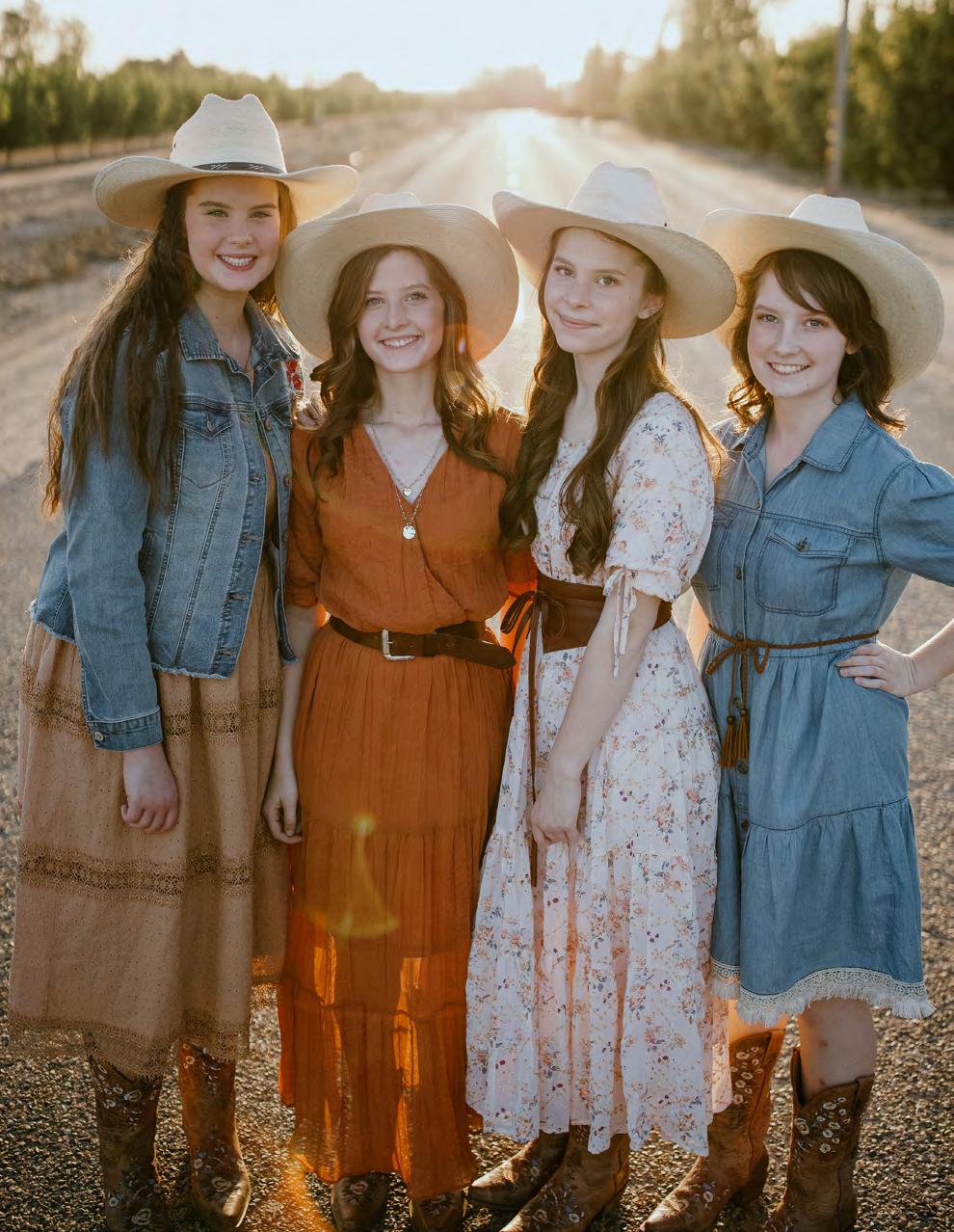
participated in a month-long tour of Wyoming with the “Concerts in the Park” series.
In addition to the live shows, the girls have an impressive discography considering their youthfulness.
“We have four albums, with the fourth being newly released as of spring 2022,” Gillingham said. That record is called “Home.”

For these musicians, “Home” was where they honed their skills starting at an early age. Gillingham said they all sang around the house as little girls, and learning instruments was soon to follow.
“Before we started on stringed instruments, we all started on piano,” she explained. “We begged our mom to let us start taking music lessons.”
KaraThe older set of twins was age seven when the lessons began, and the younger was age six. Gillingham said they all caught on so quickly that their mother soon found a local folk musician, Evo Bluestein, to get them started on stringed instruments. All four started on the mandolin but eventually landed with their instruments of choice.
“In Evo Bluestein’s music room, he had every stringed instrument you could possibly imagine,” Gillingham reminisced. “When we would do our lessons, he would let us take whatever instrument we wanted and just experiment.”
After two years of lessons, he suggested the talented sisters start their band.
“He got us our very first concert, which was at the local harvest festival in our hometown of Prather, California,” Gillingham said. “That was seven years ago, and it’s been going strong ever since.”
She said being two sets of twins is unique, but the siblings’ backstory is “even crazier.”
“We are adopted embryos,” she explained, saying they were all adopted and born into the same family through a program that places cryogenically frozen embryos with infertile couples through an adoption matching process. She said the program is called “Snowflake Embryo Adoption.”
“Just like no two snowflakes are alike,” she said, explaining how each embryo is unique and a gift from heaven. “There are over a million embryos-inwaiting who are defenseless and without a voice, but we four sisters – once frozen embryos – have been blessed to use our voices in song, sharing hope, joy, and the love of Jesus.”
She said that is their goal in “this whole musical endeavor, but to also raise awareness about this wonderful program and all the frozen embryos waiting for a chance at life. All life is precious and valuable, and because of God and our amazing parents, we are all here today!”
It was a good thing that these musically inclined sisters were adopted by parents who value music.
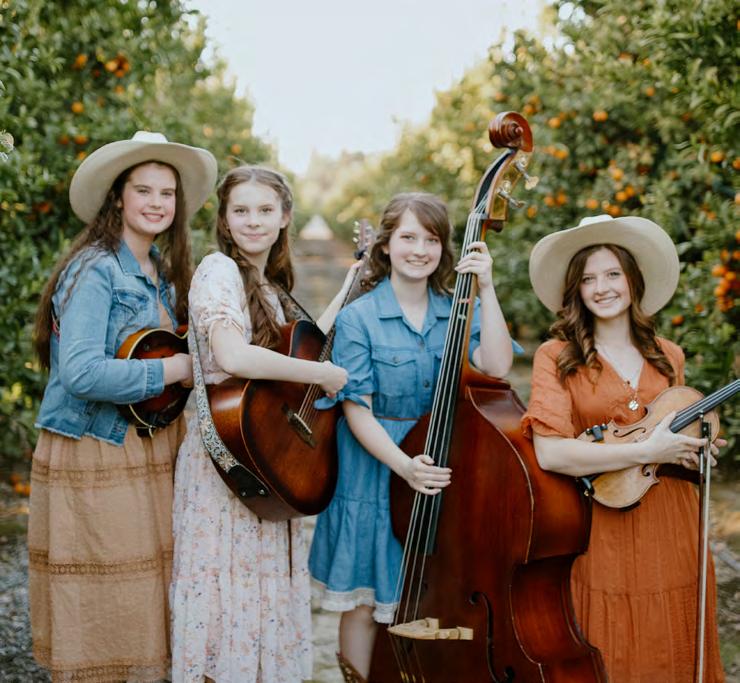
“Our mom loves bluegrass, and she would play her favorite bands when we were little…The Quebe Sisters, The Isaacs, Dolly, Doyle Lawson. We would also attend bluegrass festivals around the state of California and join their kids’ programs. I think listening to her favorite music and being surrounded by musicians while growing up is part of what has instilled in us a love for bluegrass as well as country and western swing music.”
They met Ken Burns when “playing for an event for his documentary on country music,” Gillingham said, adding that the wording on the cover of his film “sums up” how the girls see the type of music they play. It referenced the country genre but also applies to all ‘roots’ forms. It reads A story of America. One story at a time.
“To us, this statement really sums up Americana music and how it’s able to speak to so many people,” she explained. “The music is steeped in rich history and incorporates so many different styles. Like a giant tree with many branches…folk, jazz, blues, country, bluegrass, old-time, and gospel.”
Gillingham explained how a single song tells you so much about someone’s life, history, dreams, relationships, and sorrows, showing a depth of wisdom that goes well beyond her sixteen years, adding, “It’s our heritage and story.”


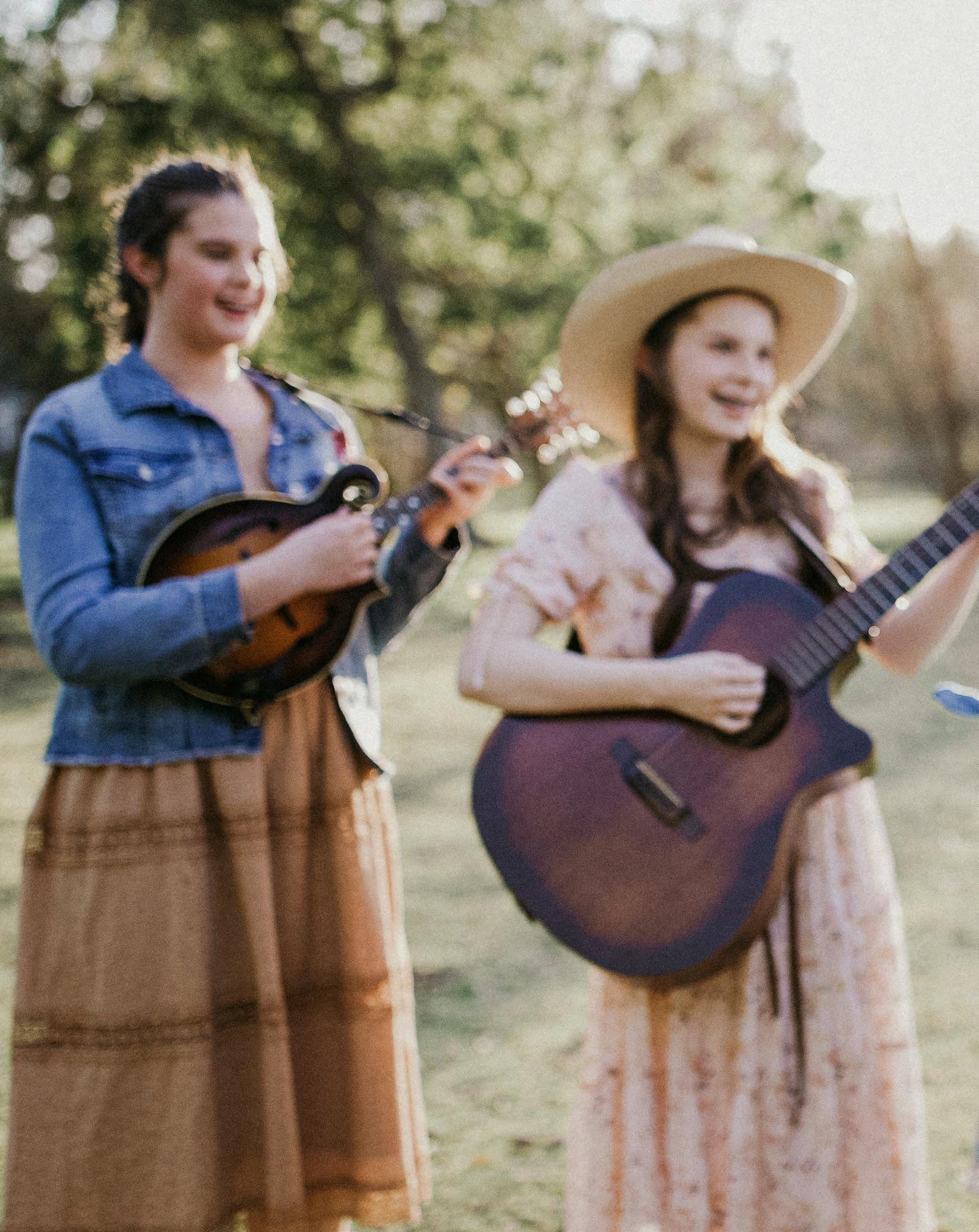

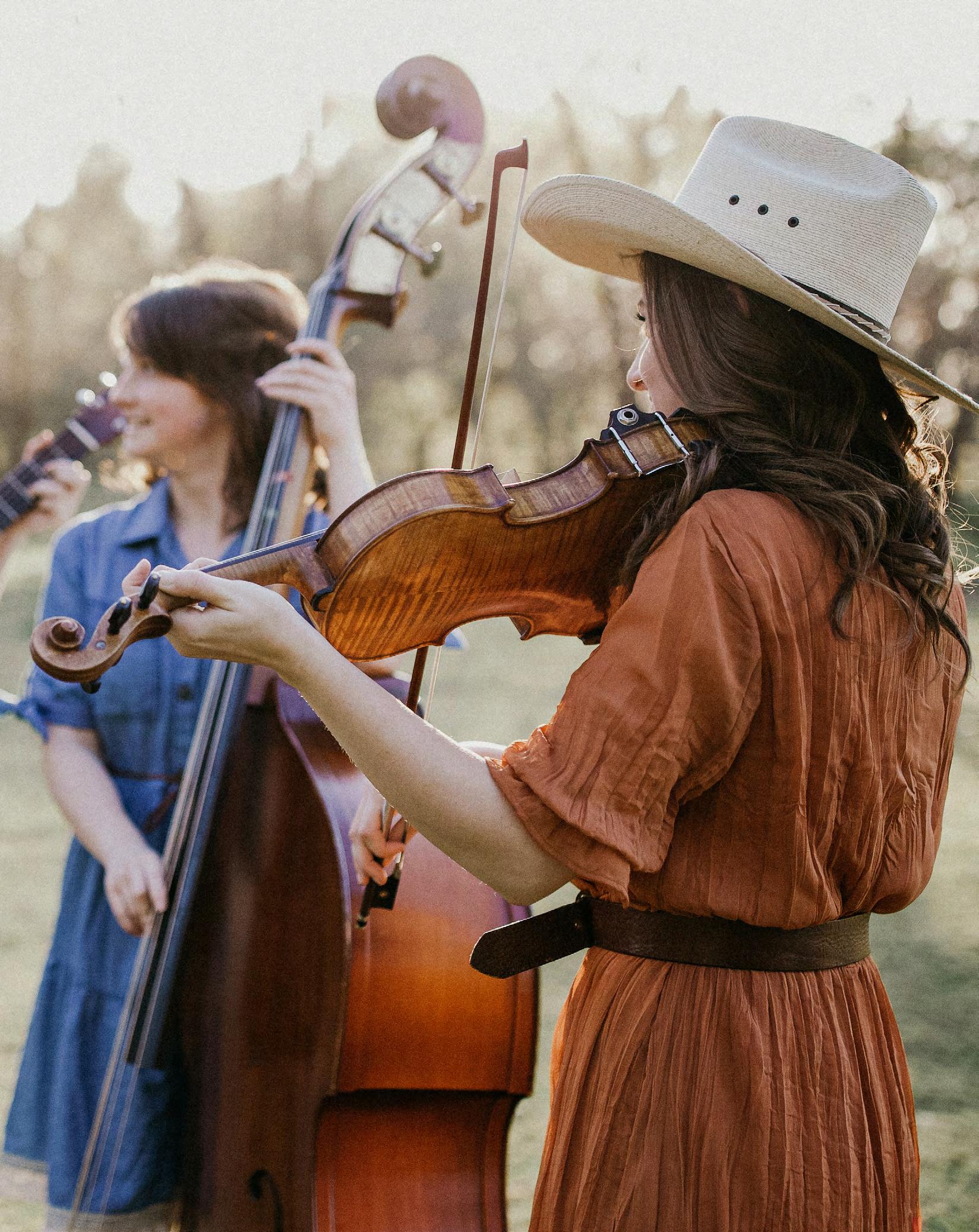
John and Frances Reedy’s Music Released as a 2-CD Collector’s Set

John and Frances Reedy are considered by many to be early pioneers and major influencers of the bluegrass genre. Known for classic songs such as “Somebody Touched Me,” their “backwoods” traditional country and bluegrass began making an impact as far back as the 1930s; their work influenced recordings of greats ranging from Ralph Stanley to Bill Monroe.
A newly released collector’s set recalls this contribution to traditional music. “The Legacy of John and Frances Reedy and Their Stone Mountain Band” is a 2-CD set of 1960s sessions, available now via Shanachie Entertainment’s historical imprint, Yazoo Records. Accompanying the music is a 20-page booklet that includes rare photographs.
Someone who can speak at length about the influence of John and Frances Reedy is their granddaughter, Timi Reedy, who performed as a small child on some numbers that appear on the new release.
“I think my grandparents and many other local bands of their era are some of the greats of music; they just were not recognized as such in their time,”
Reedy said. “As is the norm in eastern Kentucky, a lot of goodness happens on people’s porches. So, of course, virtuoso performers recognized quality when they heard it. My grandparents are the tip of the iceberg of music that is hidden and yet to be discovered from that era.”
“When my grandmother went into the studio to record, she would collect as many different recordings as she could,” Reedy continued. “The diversity of her collection was outstanding and is currently housed in Berea College Special Collections.”




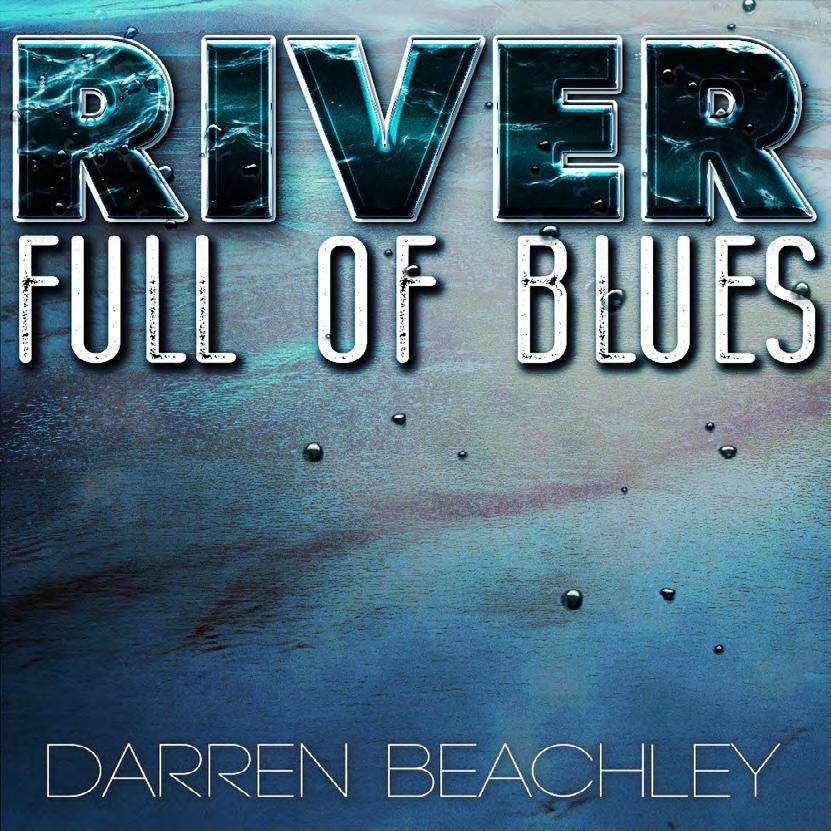
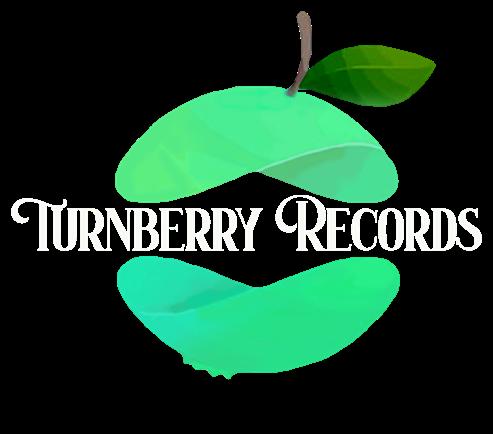

She easily described what made the music special.
“They were prolific songwriters, and I do not think enough can be said about their accompaniment,” she explained. “Usually [there were] a lot of family and friends around, playing music together for the sheer joy of it. Listening to the CDs, you can hear different friends and family taking lead vocals, taking lead on their different instruments.”
“They were so good,” Reedy added, “because they were so tight with each other.”
She has great memories of learning from such talents.
“[There was] almost daily music at our house in one way or another if they were not performing somewhere,” she said. “One of the most important things I learned from them was if you do something you love often enough and are

passionate about and lose yourself in it, you will become a master of whatever that is. Learning that one thing has served me my whole life. They were so good because they loved it and lived it daily, and poured their entire beings into the music …and it shows.”
Reedy’s musical contribution to “The Legacy of John and Frances Reedy and Their Stone Mountain Band” appears on some tracks of the collector’s set. She said she was four to six years old when she played washboard for those tracks.
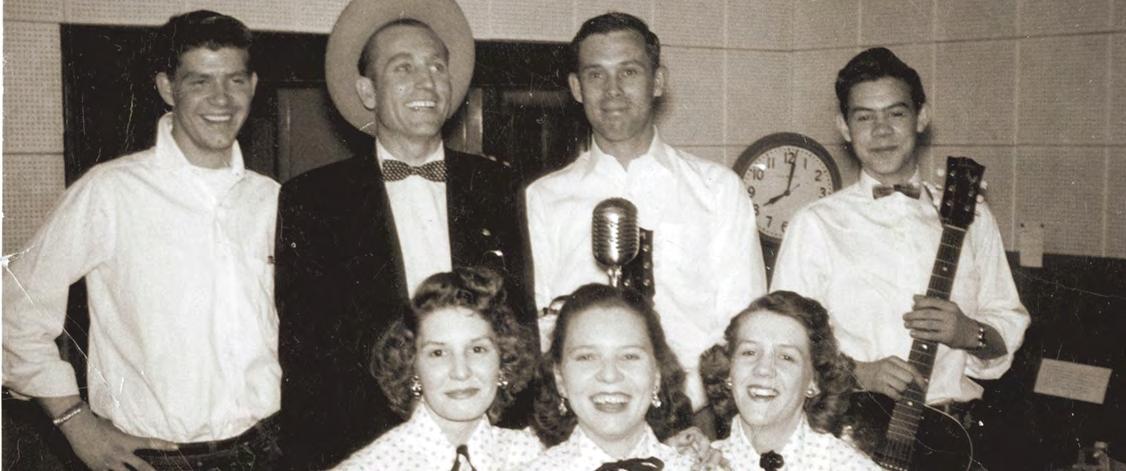
“You can hear me play loudly and then stop and come back and pick it up again,” Reedy said. “They were always teaching me chords, giving me percussion instruments, saving old harmonicas we could play with. We had small guitars and all manner of instruments we were allowed to touch.”
“I think it is important to note that the reel-to-reel recorder was always on,”
Reedy explained. “About half of my grandparents’ commercial recordings are on this release. The rest were on independent labels, or they bought studio time to record their own, so they were always recording themselves and practicing.”


Reedy said recording themselves was a way of honing in on the right formula while keeping costs low. It allowed them to “work the kinks out” without spending as much on studio time.
“Interestingly, my grandmother saved all of these reel-to-reels, and they were falling apart,” Reedy explained.” It seemed as if they would not be retrievable.”
She said Harry Rice, sound archivist at Berea College Special Collections, “warmed them in a kiln overnight and somehow they were made available for a brief time after that. I think we only lost one reel-to-reel out of many.”
“The second CD would not be there if it weren’t for Harry and Berea College Special collections,” she said. “Also, Harry knows more than anyone I have ever met about that era of music in eastern Kentucky. He accompanied us for an oral history at a recording studio in Knox County that belonged to David Lundy, where my grandparents recorded later in their careers. As Harry and Dave conversed, I realized how deep and tangled the roots and history of this music were in eastern Kentucky.”
Despite not being active as a professional musician herself, Reedy is certain her creative grandparents have made a large imprint on her, the same way they did for so many others who are artists at heart.
“I am a prolific writer and poet,” Reedy explained, “and I perform mostly for friends. I always loved the harmonica and can play that a little. I definitely picked up the songwriting gene. It just bubbles up and comes out of me and does not stop until I express it somehow. I found songs my grandparents had written on napkins, envelopes, old bills, whatever they had handy at the moment.”
Reedy said she is happy to help promote the legacy of her grandparents.
“I am so grateful for how this has unfolded and cannot stop listening to the CDs,” she said, describing it as a dreamcome-true to harvest “the fruit of many years of effort to have my grandparents’ music recognized.”


Max Wareham is a banjo player. He is also a master researcher, interviewer, and author. His first book, Rudy Lyle, The Unsung Hero of the Five-String Banjo, was released in August to rave reviews. In addition to the banjo, Max plays multiple instruments. A lover of many different music styles, his strong affection for bluegrass prompted his interest in early bluegrass styles. “I like how those old-time styles can offer alternative paths of expression within the bluegrass idiom.”
According to Max’s book, Rudy Lyle recorded extensively with Bill Monroe. “More, in fact, than any other banjo player during the early years of bluegrass music,” Max writes. “Yet, Rudy Lyle remains obscure and understudied.” Wanting to go further into the bluegrass tradition, Max began doing research for a book. “The more I learned about Rudy’s playing, the more I realized he had developed a style on the banjo that helped shape the course of the music.”
Rudy Lyle was born in 1930 to a musical family in Franklin County, Virginia. His grandfather, Lomax Blankenship, was a well-known fiddle player, and his mother, Elcie Lyle, was a guitar player. He learned
to play the clawhammer banjo from his grandfather and how to pick from local banjo players. Snuffy Jenkins, who Rudy listened to on radio broadcasts, also influenced him.
Rudy began playing professionally in 1947 when he moved to Mt. Airy, North Carolina, to play with Uncle Joe Johnson and The Blue Ridge Mountain Boys. Bill Monroe heard his playing on the radio and invited him to join his band in 1949. Rudy was on the road six days a week with Monroe, returning to Nashville once a week for the weekly performance on the Grand Ole Opry.
The book chronicles Rudy’s life and includes interviews with people who played with Rudy or who he influenced. “The hardest part of the project was tracking people down to interview them,” says Max. “Many are giants in the tradition. But after so much time tracking them down, each one was so generous with their time, and I was amazed at how consistently people said, ‘this book needs to be written.’ I felt like a detective of sorts, and the truth is that it is very unlikely that the book happened at all. But in the end, I was honored to interview so many of my heroes.”
Susan MarquezThe book project began when Max listened to classic recordings of Bill Monroe from the 1940s and 50s. “The more I listened, the more the music grabbed me. The sound had an energy that I loved.” Max began researching Rudy Lyle but found almost nothing. “There were no Rudy Lyle banjo tabs at all.” Bluegrass music has a strong history; songs and stylings were often passed down from person to person. “I realized there was a niche that had not
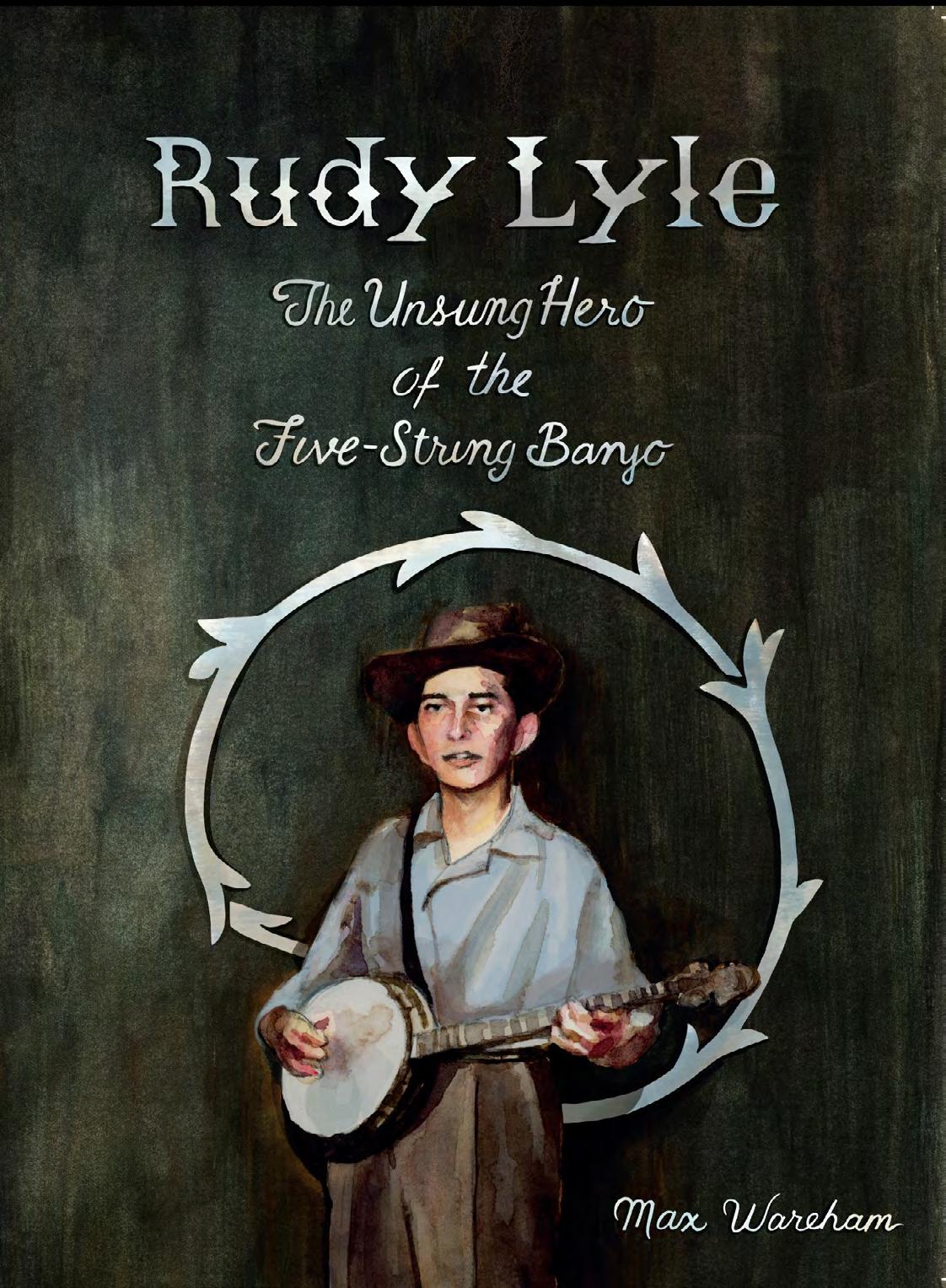
been filled. I wanted to learn his style and get his energy into my playing.”

Looking back on the book project, Max says that if he had thought about it, he might not have done it. “I thought, sure, I can write a book. But the fact is that I have never written a book before now. I had no idea what all went into it.” Max did his research, interviews, writing, and layout. “I was in new territory every step of the way, learning as I went.” He chose to use illustrations of the people he interviewed. “I love the work of Giselle Harrington. She did a beautiful job honoring each person in the book. Her illustrations are wonderful.”
The book is also instructional. “I learned from several masters of the banjo, including Bill Keith and Tony Trischka. I also learned from many banjo instruction books. That’s why making this an instructional book was important to me. But it is more than that. There are many layers and dimensions to this book.”
Two people Max interviewed sadly passed away before the book was published. Bill Emerson and Sonny Osborne both recalled their memories of Rudy Lyle. “The interviews for the book were likely the last interview either of them did.”
The book turned out to be a labor of love for Max, who says he is kicking around a couple of ideas for another book. “I would like to continue this kind of work.” In the meantime, Max will continue playing with the Peter Rowan Bluegrass band and teaching music.




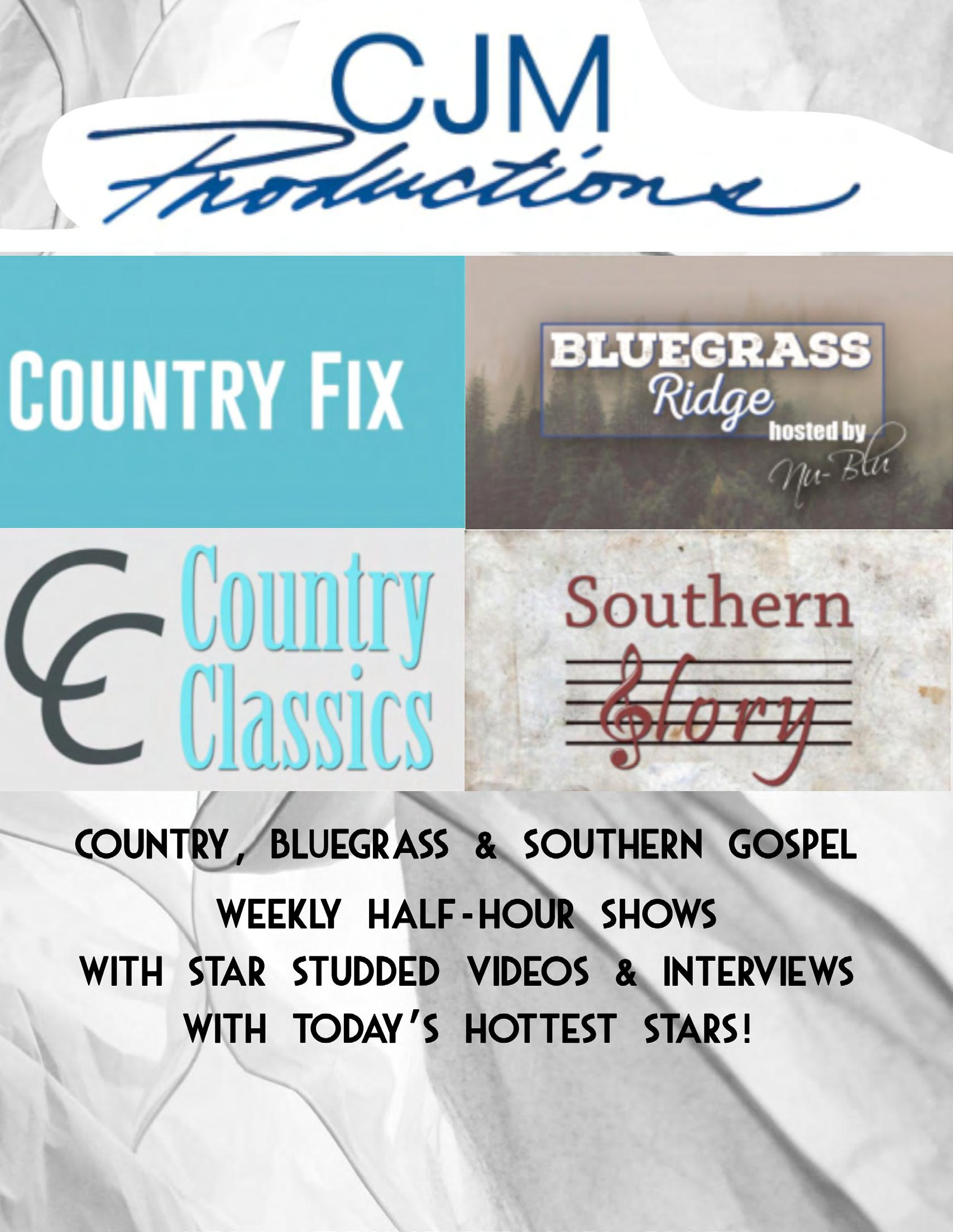

Burns
Road
Mountain Home Music
Independent
Copper Mountain Records
Billy Blue Records
Strings Billy Strings NRV
IBMA Awards Show NRV
Hott
Wildfire
615 Hideaway Records

Billy Blue Records
Turnberry Records
Pinecastle Records
Home
Blue Records
Music and food travel hand-inhand.
While bluegrass influences make their way into events and gatherings on the opposite side of the globe, food traditions linger not far behind - if they are not already there.
Foods rooted in Appalachia are increasingly found in dishes outside of the region and beyond.

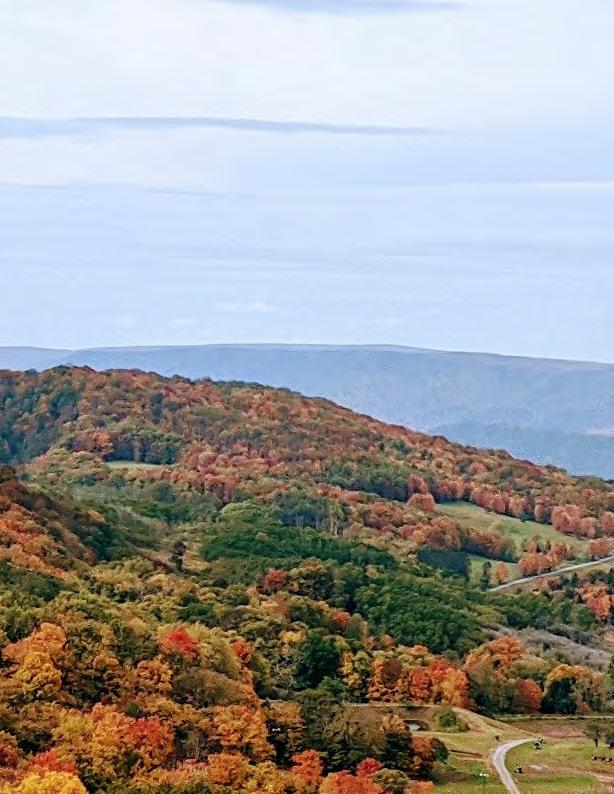
Whether it is a naturally grown fruit or a value-added product, these Appalachian foods are finding fans far from their home.
Sea salt. Himalayan pink salt. Fleur de sel. There are myriad
types of salt, but one particular brand harvested in Appalachia has become a favorite of people near and far. In fact, this salt was awarded the “Best Salt in the World” at the World’s Fair in London in 1851. J.Q. Dickinson Salt Works, located in Malden, West Virginia, harvests all-natural salt by hand from an ancient ocean trapped underneath the Appalachian Mountains. The artisanal finishing salt is coveted for its natural flavor. But it is also sold in specialty flavors, such as Applewood Smoked, Bourbon Barrel Smoked, Ghost Pepper, Mushroom Herb, and Ramps.
Every spring, large green, leafy shoots sprout from the soil as a
bulbous garlic-flavored onion grows underground. The wild onions known as ramps are pungent and flavorful, making them the perfect addition to sauces, pasta, and breads. The beloved allium is celebrated at festivals throughout Appalachia and is often found at roadside farm stands along country roads. Messes of ramps are in Eastern North America, specifically in shady Appalachian forests, and demand for them has skyrocketed over the last decade. A version of the ramp - the ramson - can be found elsewhere, like in Germany where they have found their way into mainstream cuisine and supermarket shelves.
If you were to cross a mango and a banana, you might end up with Appalachia’s tropical fruit; the pawpaw. The greenish-brown fruit is full of a yellow custard and large black disc seeds. It’s about six inches long and is the largest edible fruit native to North America. Pawpaws are found growing in the Eastern and Midwestern United States,

world, particularly in Catalan and French cuisine. But because morels are difficult to cultivate, foraging is usually the most effective way of gathering the mushrooms. The capped mushroom has a honeycomb texture and are found near trees in the woods; there are other mushrooms that look similar but are toxic so proper identification

production is based in the United States and Canada. Maple syrup from the two North American countries is exported to Germany, Australia and the United Kingdom most frequently.
Appalachia is home to a bounty of incredible food - much of which has expanded beyond the borders of the region or has a similar variety growing in other parts of the world.
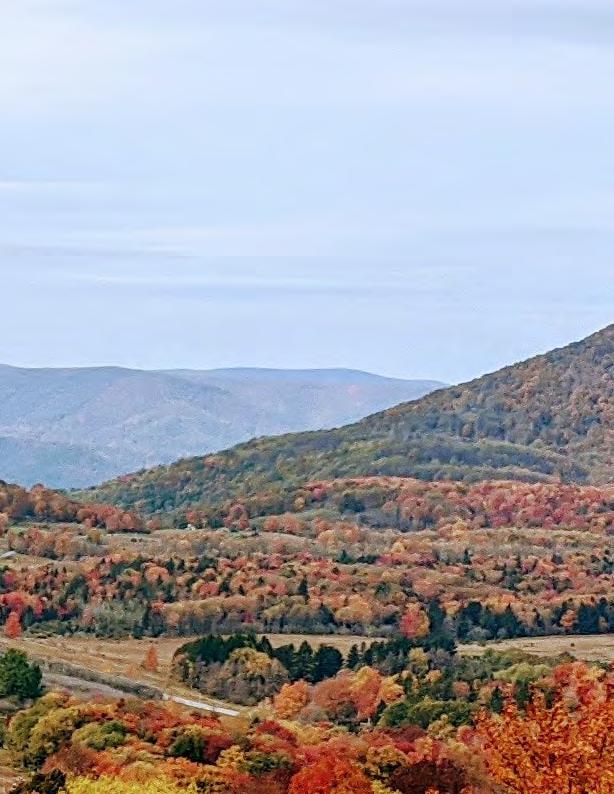
Global dishes are being created with Appalachian ingredients due to their unique flavor profiles and scarcity of availability. When a meal is made with morels or ramps, it is special because those ingredients are not available just anywhere - and, they are delicious.
extending up into Ontario, Canada. “It is believed that Indigenous people, including the Erie and Onondaga, introduced the tree to Southern Ontario from the United States,” according to The Canadian Encyclopedia. They unfortunately don’t have a very long shelf life and can bruise easily, so our neighbors to the north may be the furthest the fruit travels for now.
Also known as “Molly Moochers,” morel mushrooms are a prized find for foragers in Appalachia. The wild fungi has an earthy, nutty flavor that makes them highly desired in the culinary
is crucial. The deep umami flavor lends itself to salads, soups and pastas well - in any cuisine. Or, just sautée them in butter with salt and pepper to get a true taste.
The sticky sweet syrup that comes from Maple trees is perfect on pancakes, waffles and French toast, but in Appalachia, it is also used as a glaze for meat, a sweetener for sauces and a topping for biscuits. Maple syrup production is increasing in the region, but Canada holds the crown for the maple syrup category. And together, the two countries are at the top. Nearly all of the world’s maple syrup
Appalachian foods continue to make their way into the national, and international, spotlight. After years of relative obscurity and being considered hidden gems, these ingredients are now the highlights of meals and bringing attention to the Appalachian region for its culinary diversity.
So, be sure to check out these delicacies now or when they are in season; your taste buds will thank you.
Gift-giving is a special kind of art.
A thoughtful gift - whether material or experiential - can mean a lot to both the gifter and the receiver and can point to a special moment, inside joke, or just even bring joy. It’s a showcase of love, attention, and care.
For the food lover in your life, it’s the perfect time to gift them something new, something they may never splurge on, or something hard to find for their kitchen.
As a bonus, the following gifts have ties to Appalachia, so you can give a new treasure to a loved one and support local artisans simultaneously. Or, you might even enjoy one - or two - for yourself.
1. Peach Salsa from Blue Smoke Salsa - Who doesn’t enjoy chips and salsa? Blue Smoke Salsa, based out of Charleston, West Virginia, offers mild, medium, hot, triple-x hot, and peach. The all-natural salsa is kettle-cooked in small batches with special
attention to quality ingredients. More information: https://www. vandaliaincorporated.com/
2. Mustard Relish from Uncle Bunk’s - This award-winning relish is a gourmet product based on an old-time Appalachian recipe and comes in both medium and hot versions. It joins the ranks of products like rustic pepper sauce, 14-day sweet pickles, and spice blends. More information: https://www.unclebunks.com/
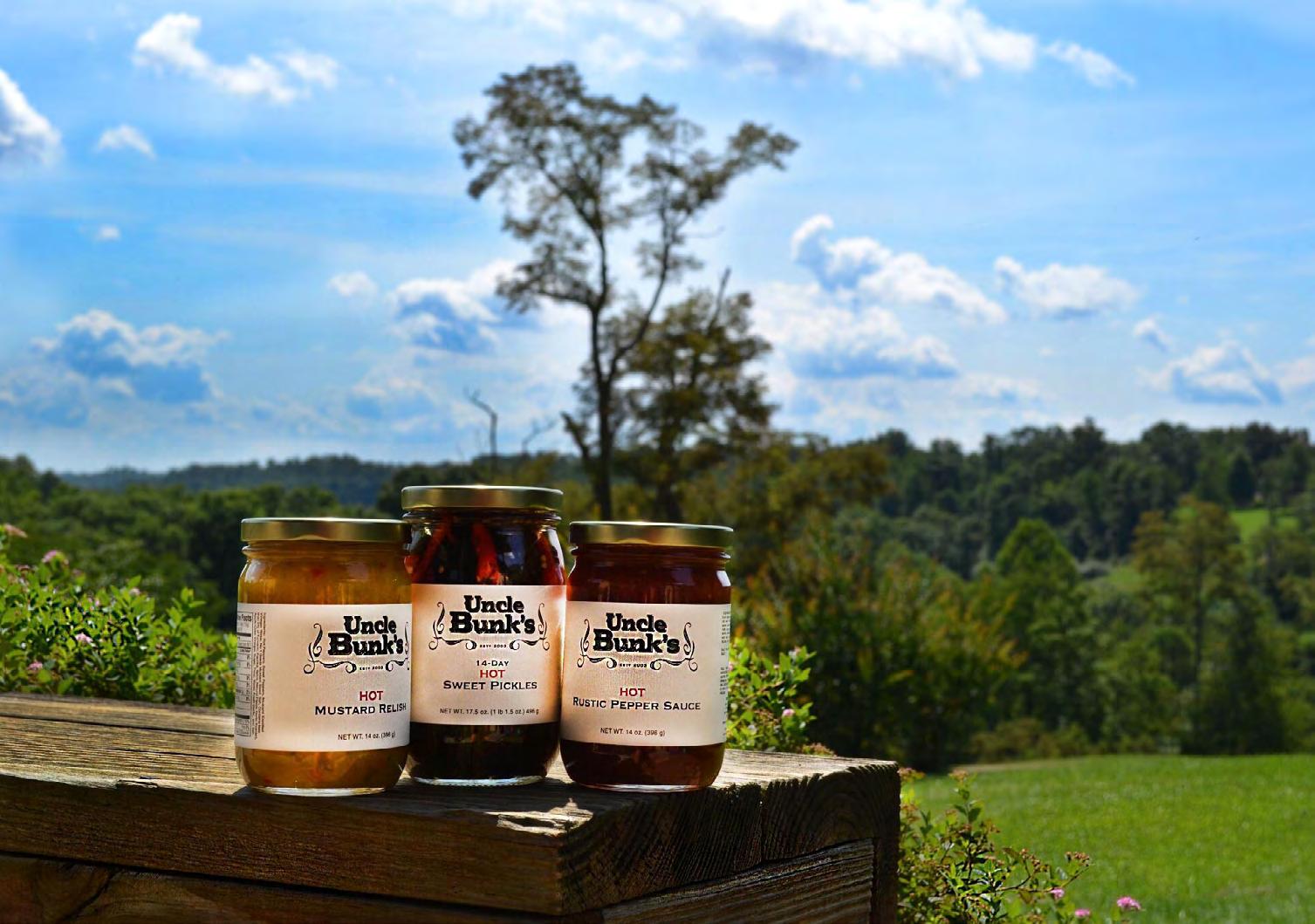
3. Rosemary Honey from

Thistledew Farms - Crafted from light wildflower honey and natural herbs and spices, the rosemary honey from Thistledew farms is the perfect complement for pork or chicken dishes to add some depth. More information: https://www.thistledewfarm.com/
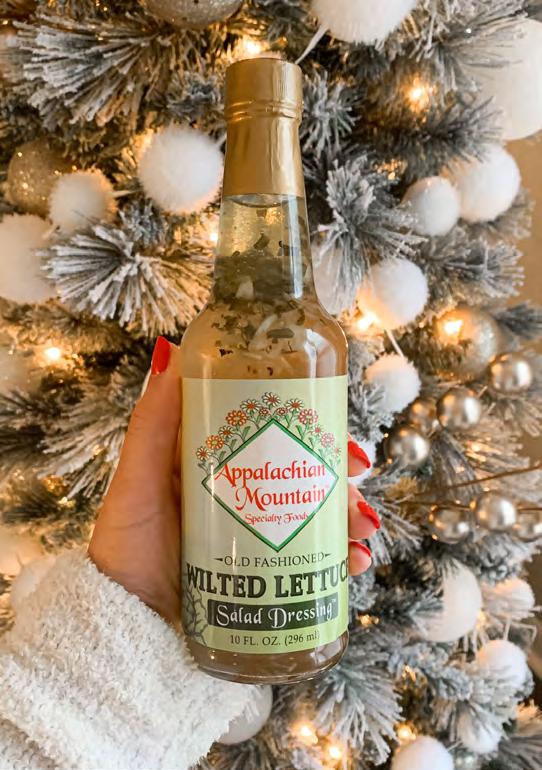
4. Old-Fashioned Wilted Lettuce Salad Dressing from Appalachian Mountain Specialty Foods - Reminiscent of those family get-togethers in the country, this dressing is sweet and tart and is perfect on any garden, pasta, bean, cucumber, or other prepared salad. And, of course, it’s great on a traditional wilted lettuce salad. More information: https://www. vandaliaincorporated.com/
5. Sour Cream & Onion Chips from Mister Bee Potato Chips - Made in Parkersburg, West Virginia, Mister Bee Potato Chips come in nine varieties: original, barbeque, dip style, cheddar sour cream, honey barbeque, jalapeno dip style, salt and vinegar, potato stix, and my personal favorite: sour cream & onion. Try them all to see which is your favorite. More information: https://misterbee. com/
6. Biscuit Mix from Teays ValleyIf you want biscuits like grandma made, this biscuit mix is the closest you’ll find. Their slogan, “nobody has to know it came from a mix,” rings true when these tasty biscuits are presented. More information: https://tastyblend. americommerce.com/
7. Original BBQ Sauce from Lem’s Meat Varnish - Created by
a competition pit master, Lem’s Meat Varnish is made in small batches with fine ingredients and is used in barbecue competitions. The sauce is sweet with a bit of heat and goes well on just about anything. More information: https://www.lemsmeatvarnish. com/
8. Hot Dog Chili from Custard Stand - For the perfect chili dog, top your wiener with hot dog chili from Custard Stand, which uses a secret blend of spices and 100% ground beef in a century-old family recipe.
9. Water Bottle from Blenko Glass Co. - The iconic 384 Water Bottle from Blenko is a beautiful centerpiece and vessel for any beverage on the dinner table. The bottle comes in a variety of colors and designs. More information: https://blenko.com/
10. Ramp Finishing Salt from J.Q. Dickinson Salt-Works - Add a bit of onion flavor to your favorite dishes with this salt infused with Appalachia’s favorite wild leek: the ramp. More information: https://www.jqdsalt.com/
11. The West Virginia Pepperoni Roll from Candace Nelson –(Shameless plug for this author’s book.) The West Virginia Pepperoni Roll tells the story of West Virginia’s unofficial state food. More information: https:// wvupressonline.com/node/667
12. Hot Pepper Jelly from Bigg Riggs Farm - Paired with crackers and cream cheese, hot pepper jelly can be the ultimate crowdpleaser. Try it for an appetizer or
hors d’oeuvres. More information: https://biggriggsfarm.square.site/
13. Pear Butter Jam and Glaze from Simple Products - Made from organically grown Bartlet pears in Ohio, this jam complements any breakfast. Once the pears are cooked and puréed, special spices are added to create a tasty condiment. More information: https:// simplegourmetsyrups.com/

14. Original Hickory Syrup from Falling Bark Farm - Based in the heart of Virginia, Falling Bark Farm makes a unique syrup from the bark of the shagbark hickory tree. It creates a smoky, sweet flavor that goes well on pancakes or waffles. More information: https://fallingbarkfarm.com/
Pick one, two, or a few to create a delicious taste of Appalachia that will surprise and delight any recipient. And, we won’t tell if a few caught your eye and you decide to treat yourself.
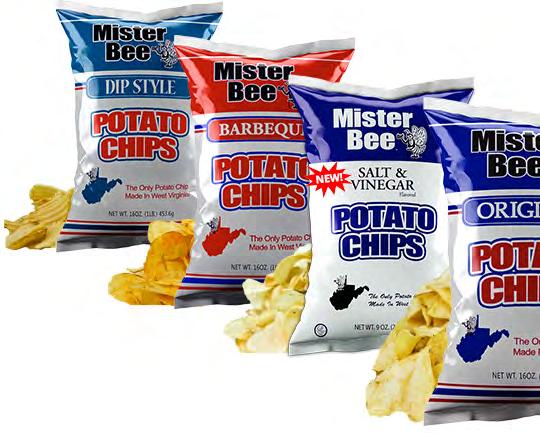
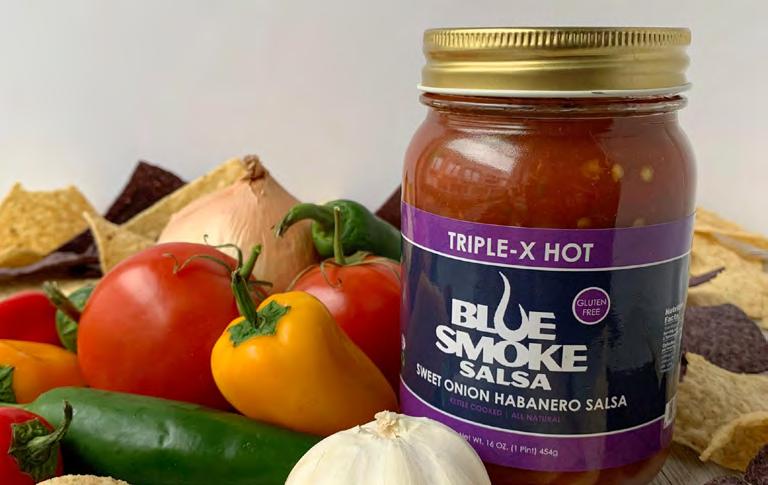


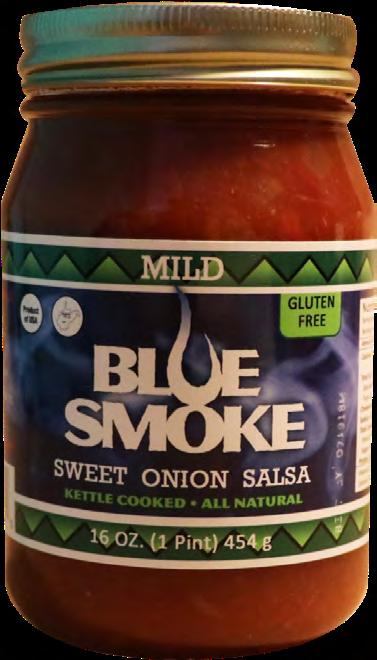

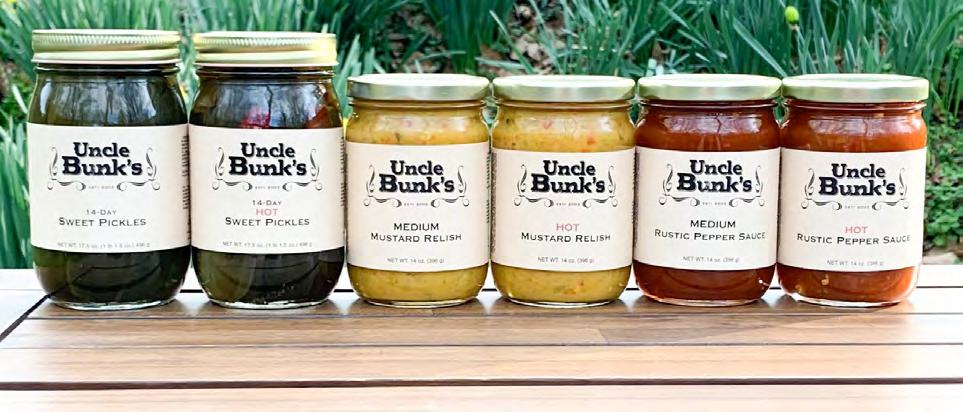
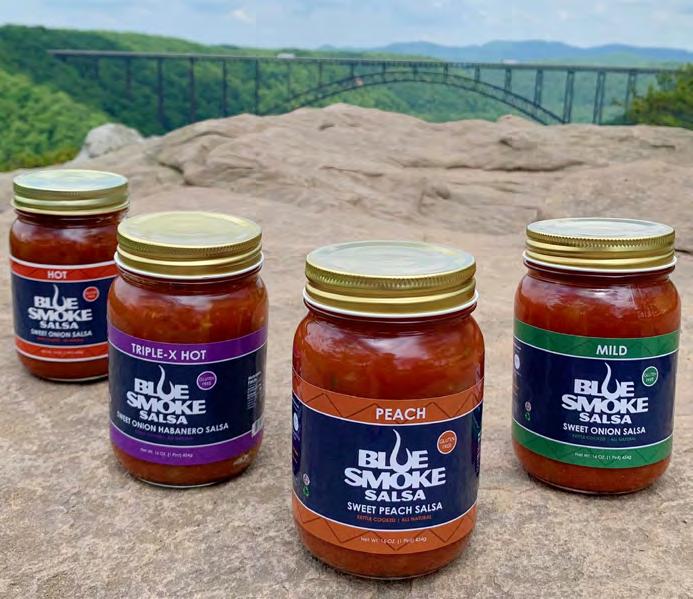
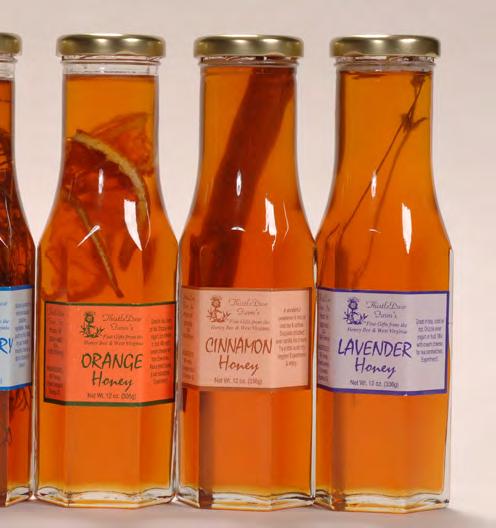
CD: Everybody But Me
Artist: Jake Vaadeland Artist Website: https://www.jakevaadeland.com
Last year, I was pleased to review Jake Vaadeland’s EP release, “Retro Man,” in The Bluegrass Standard (https:// thebluegrassstandard.com/retro-man/). Since then, Jake’s been hard at it with a full-length CD entitled Everybody But Me.
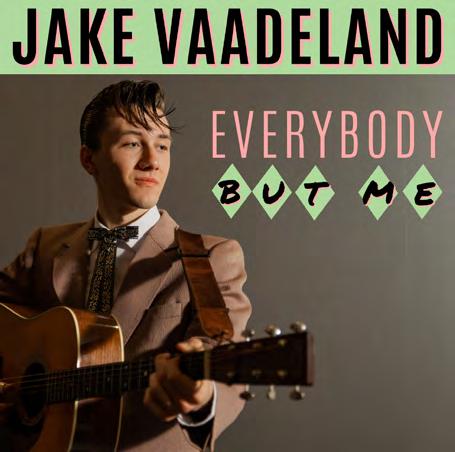

Jake’s got the retro-country thing going on in high gear: retro-country-rockabilly-Elvis-Faron-Earl-Buddy-HolleyCanadiana-Americana-string-tied-pompadour and all points in between. All original songs give a taste of pastoral Saskatchewan life, but I swear I get glimpses of rear-engined Greyhound Scenicruisers and smell the diesel fumes, with Jake telling the uniformed driver how to get to the next gig.
Everybody But Me gives us ten songs:
1. Everybody But Me
2. Bar Down The Street
3. Suits
4. Bachelor’s Life
5. Prairie Blues
6. Gonna Find My Baby
7. You Don’t Love Me Anymore
8. Be Good Stewards
9. Once in a While
10. Living Simply
I tried to pick favorites. I can’t do it. I have ten favorites out of ten songs. I suppose I’ll have to pick one and call it double-extra-super-favorite, and that would be “Bachelor’s Life,” and right behind it is “Living Simply” (OK, I picked two). Jake’s finger-picking guitar style is strongly reminiscent of Earl Scruggs, and it’s a joyous presence on “Living Simply,” a ballad whose title is not misleading. “Bachelor’s Life” is a peppy lament about missing bachelorhood. It is Johnny Cash’s bent E-string guitar meets Earl’s five-string banjo. Snippets of some of the tunes are available to listen to on Jake’s website, along with many other songs.
One can hear Jake’s influences, and each song on the CD introduces us to a new influence. To say that Jake is an amalgam of Elvis, Cash, Perkins, Scruggs, (Tommy) Hunter, (Faron) Young, (Buddy) Holley, and (Webb) Pierce would not yield the whole story. I hear these influences, but Jake has made them his own, filtered through his Saskatchewan experience and how he perceives himself. Music is show business. Sometimes there is more show than substance, but Jake delivers quality music and entertainment. I like the funky ‘50s reverb on some of the songs, and the pedal steel on “Bar Down the Street” is fabulous.
I suppose the best thing one can say about this CD is that I was singing along with all the songs the second time through. If I listen a few more times, I’ll have the words down pat, having internalized them all, in effect, making the songs part of me. That is a remarkable achievement.
Jake’s headed for big places. There is a hunger for real country music, and this is about as real
as it gets. Jake will soon be joining the ranks of many other Canadian singers/songwriters/ entertainers who all made significant contributions to American music. There’ve been several: Gordon Lightfoot, Ian Tyson, Joni Mitchell, Neil Young, Tommy Hunter, Leonard Cohen, and The Band. There have been many more; you can add the rest if you’d like.

Maybe one day, we’ll all add Jake Vaadeland to the list.

 Mississippi Chris Sharp
Mississippi Chris Sharp


